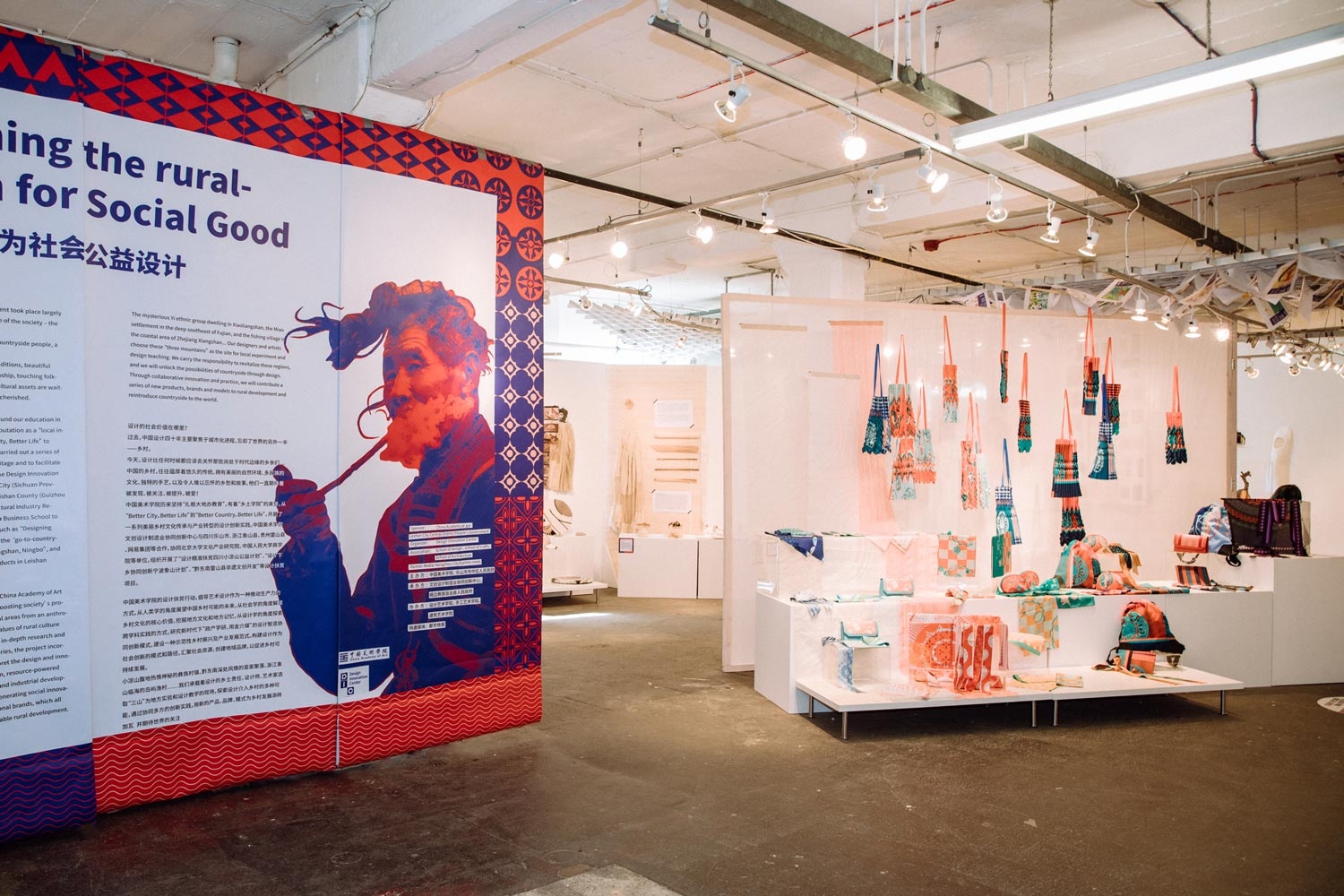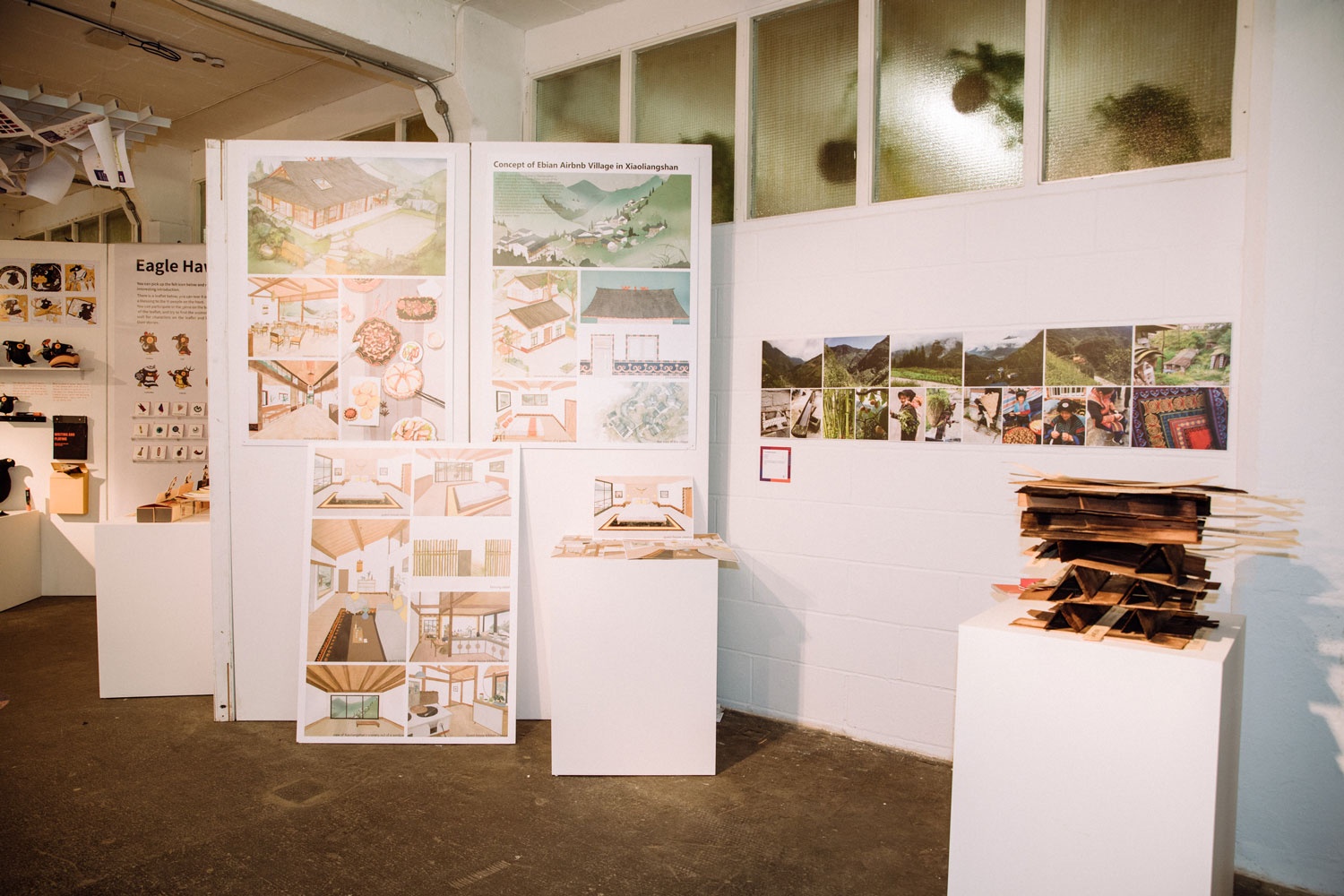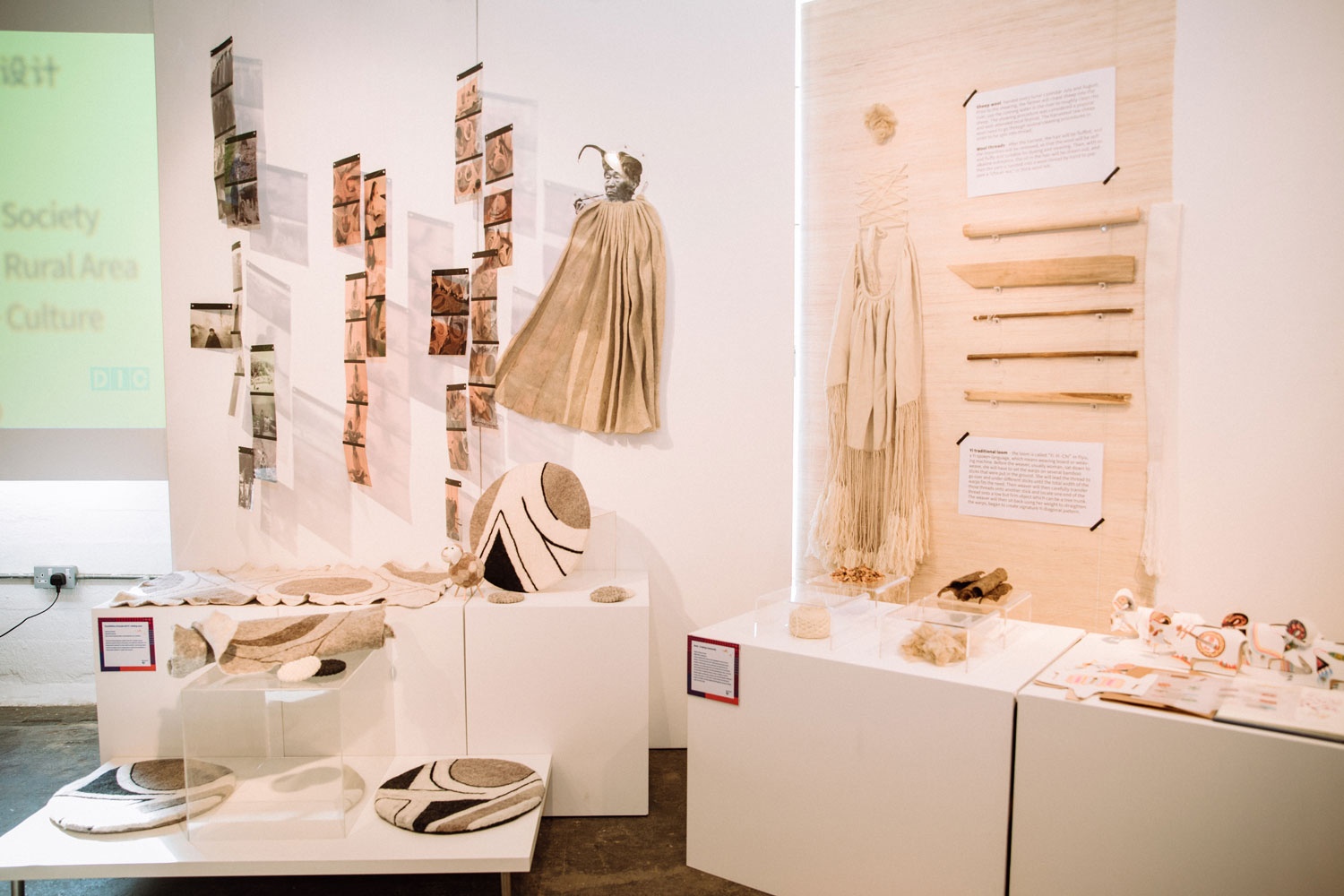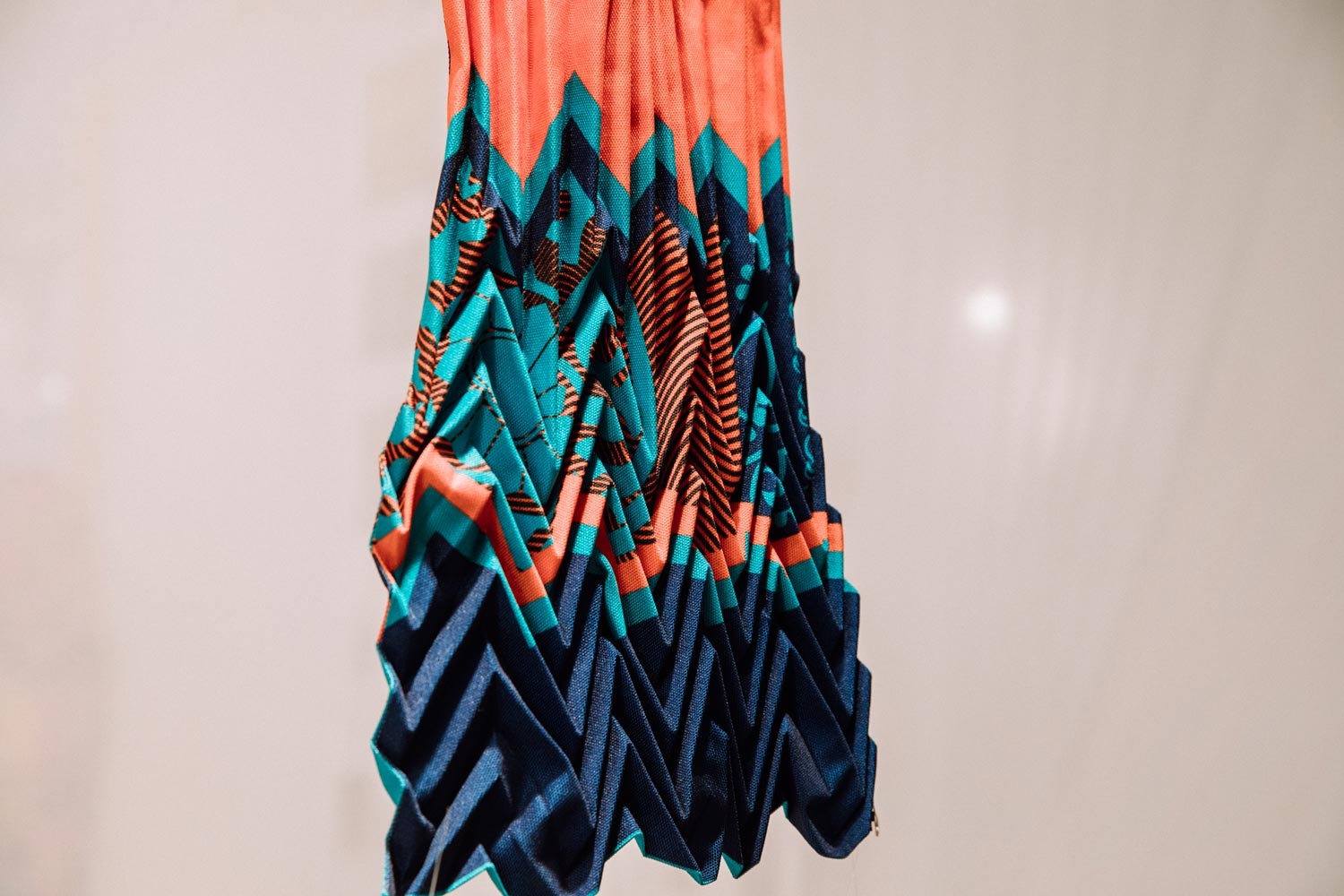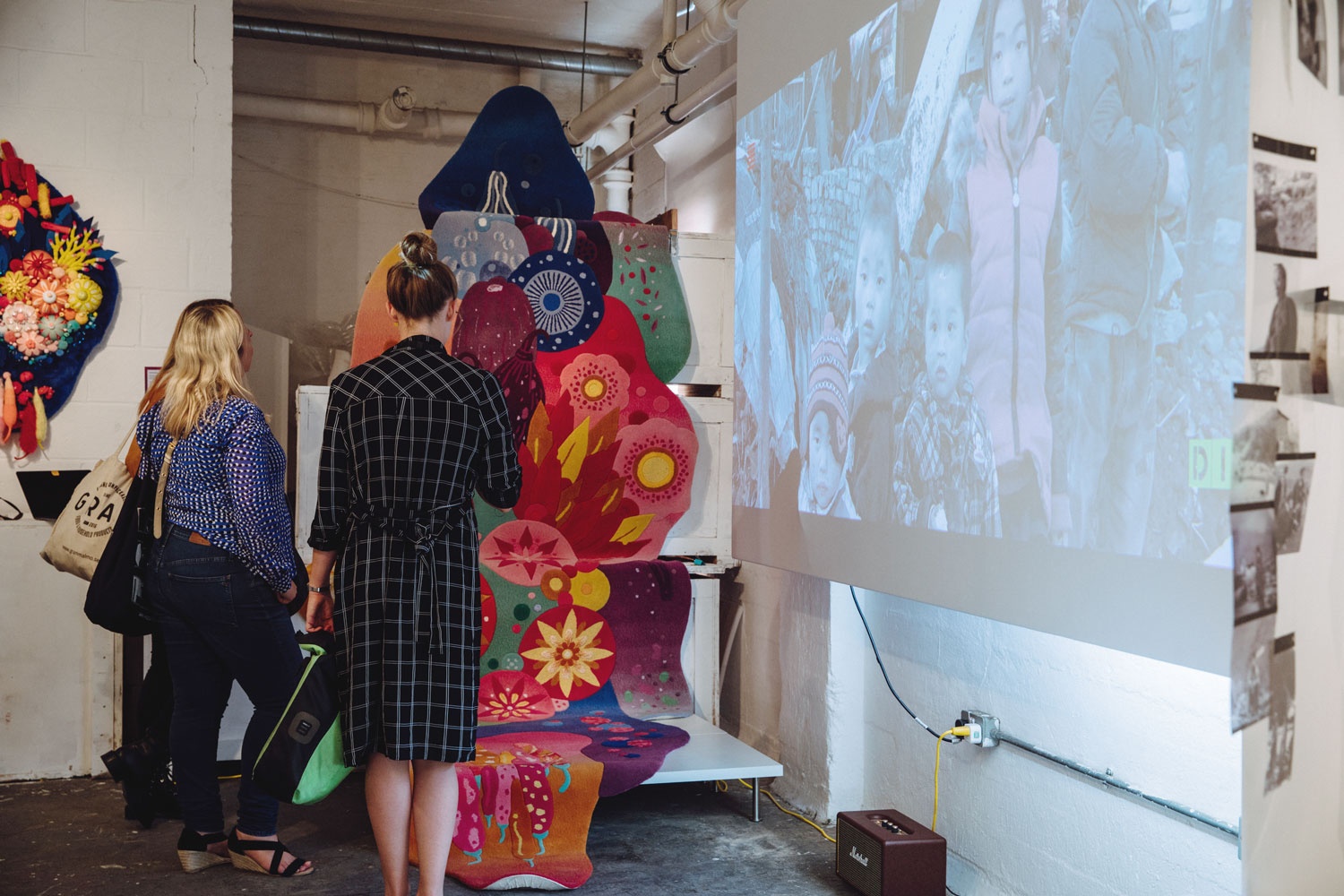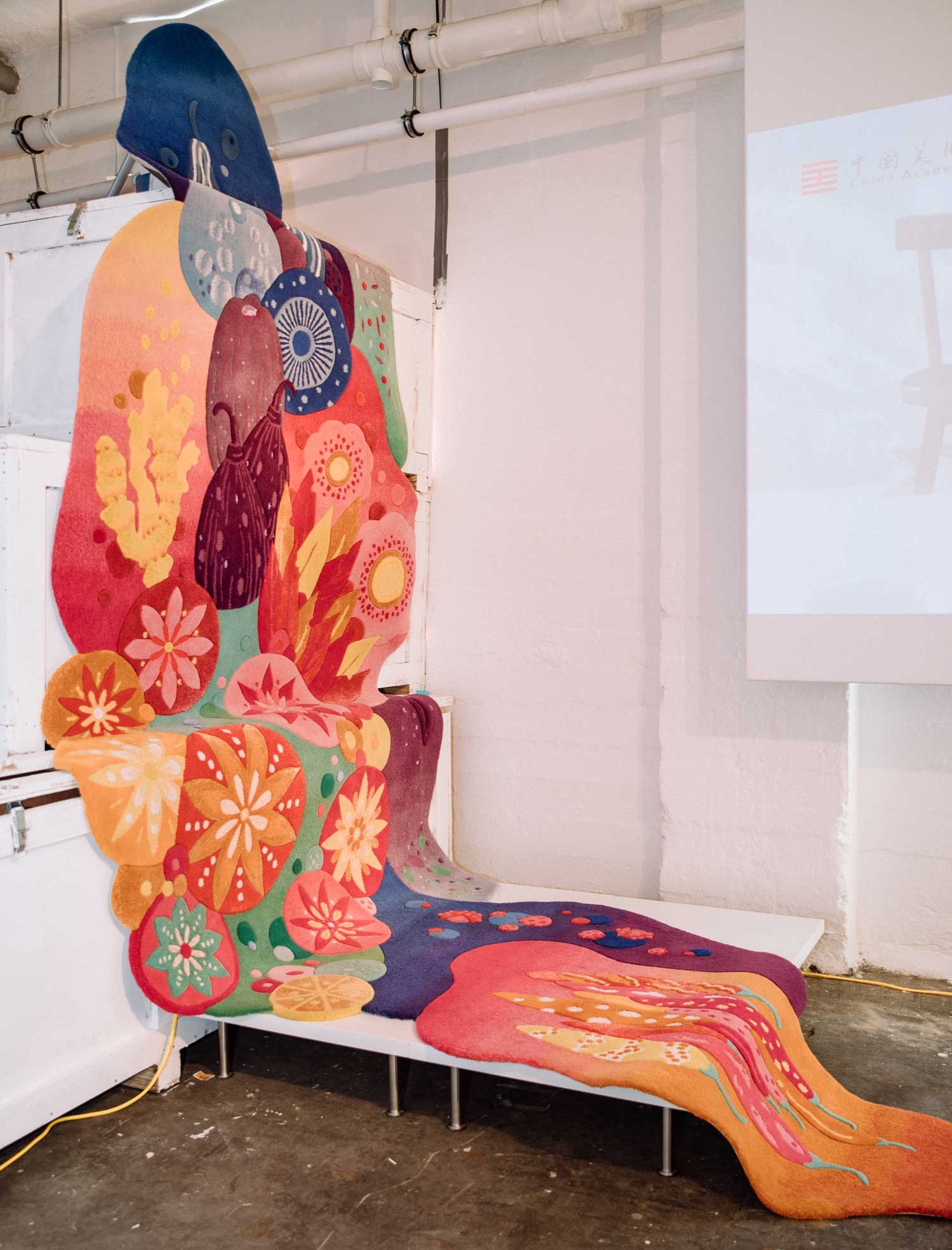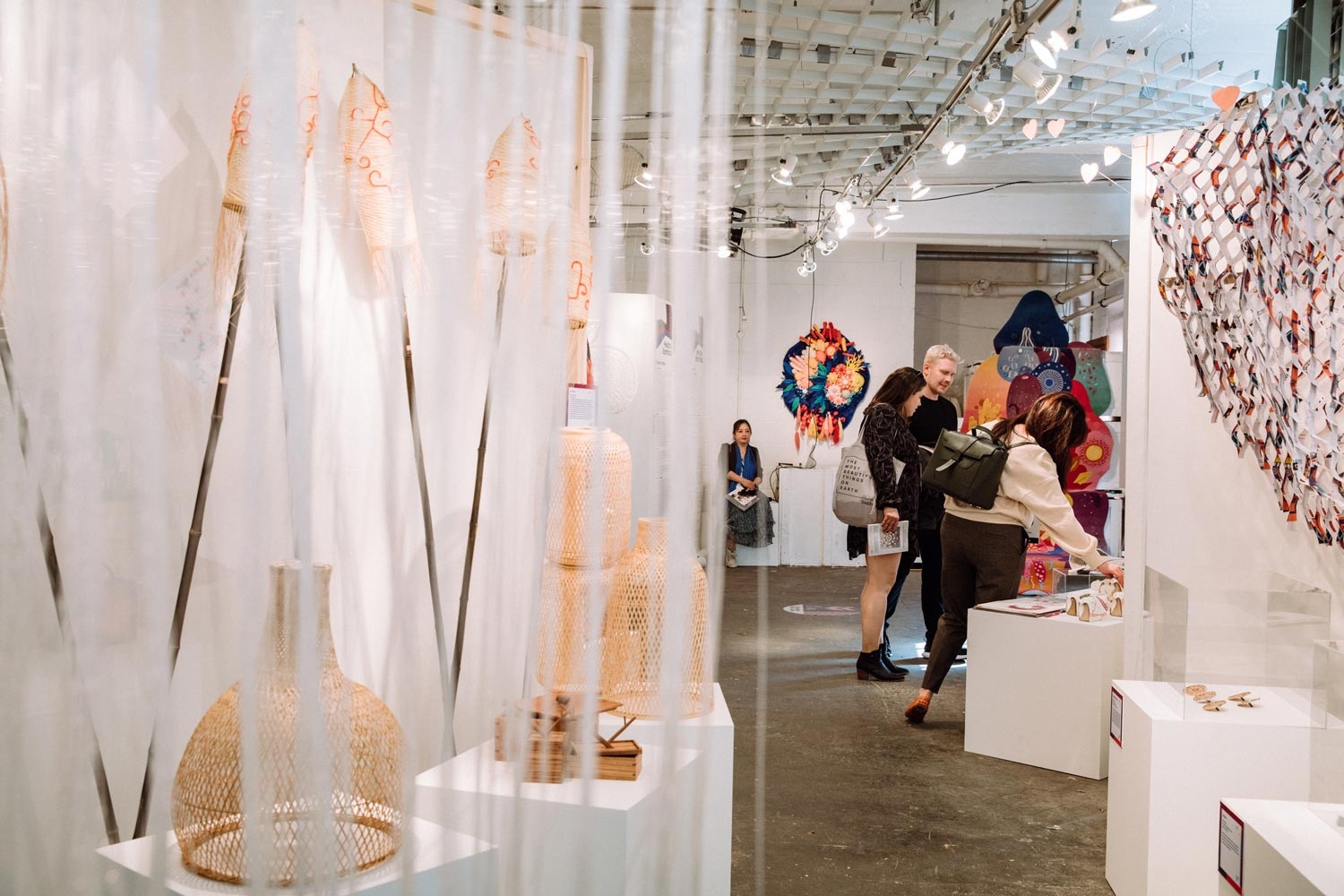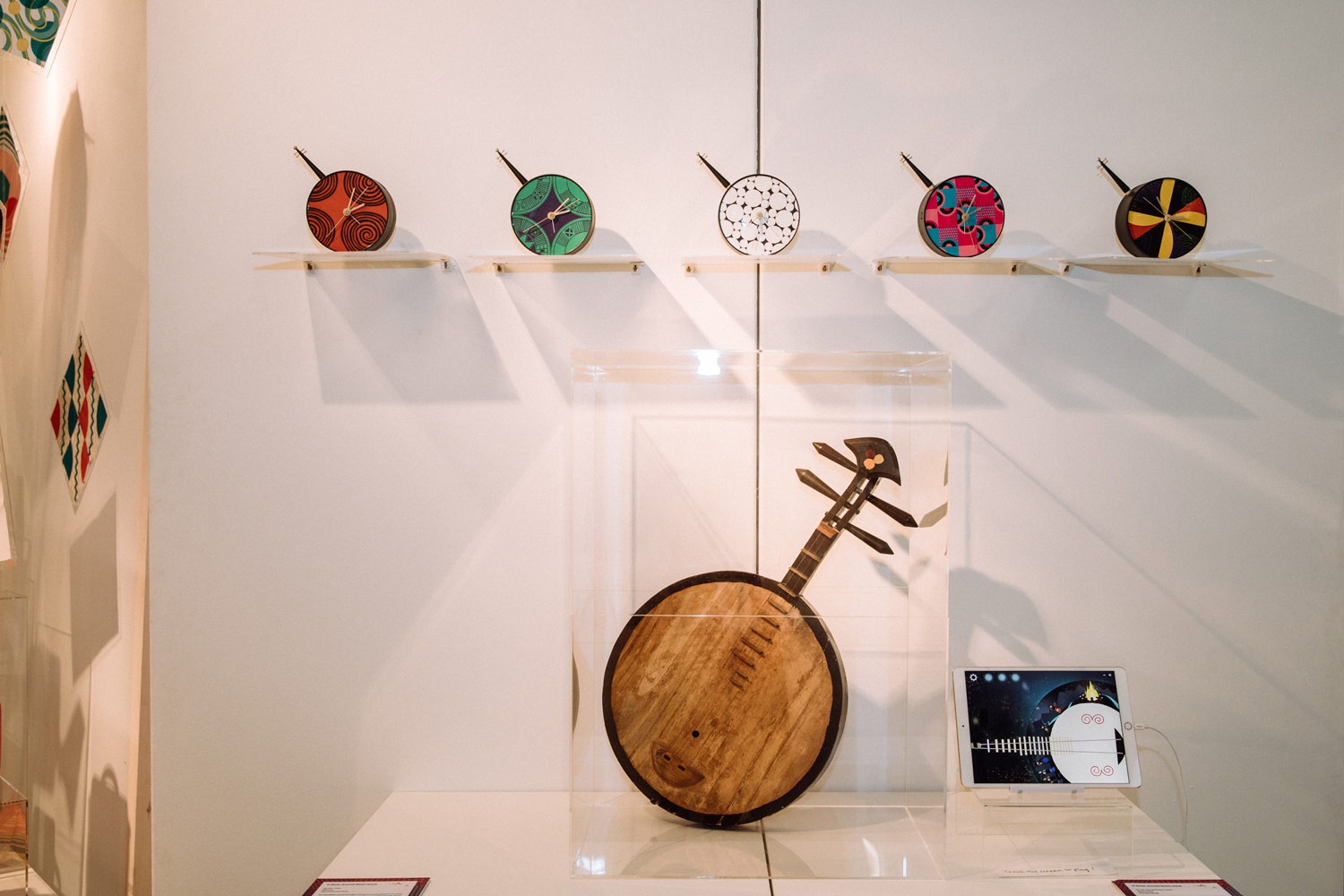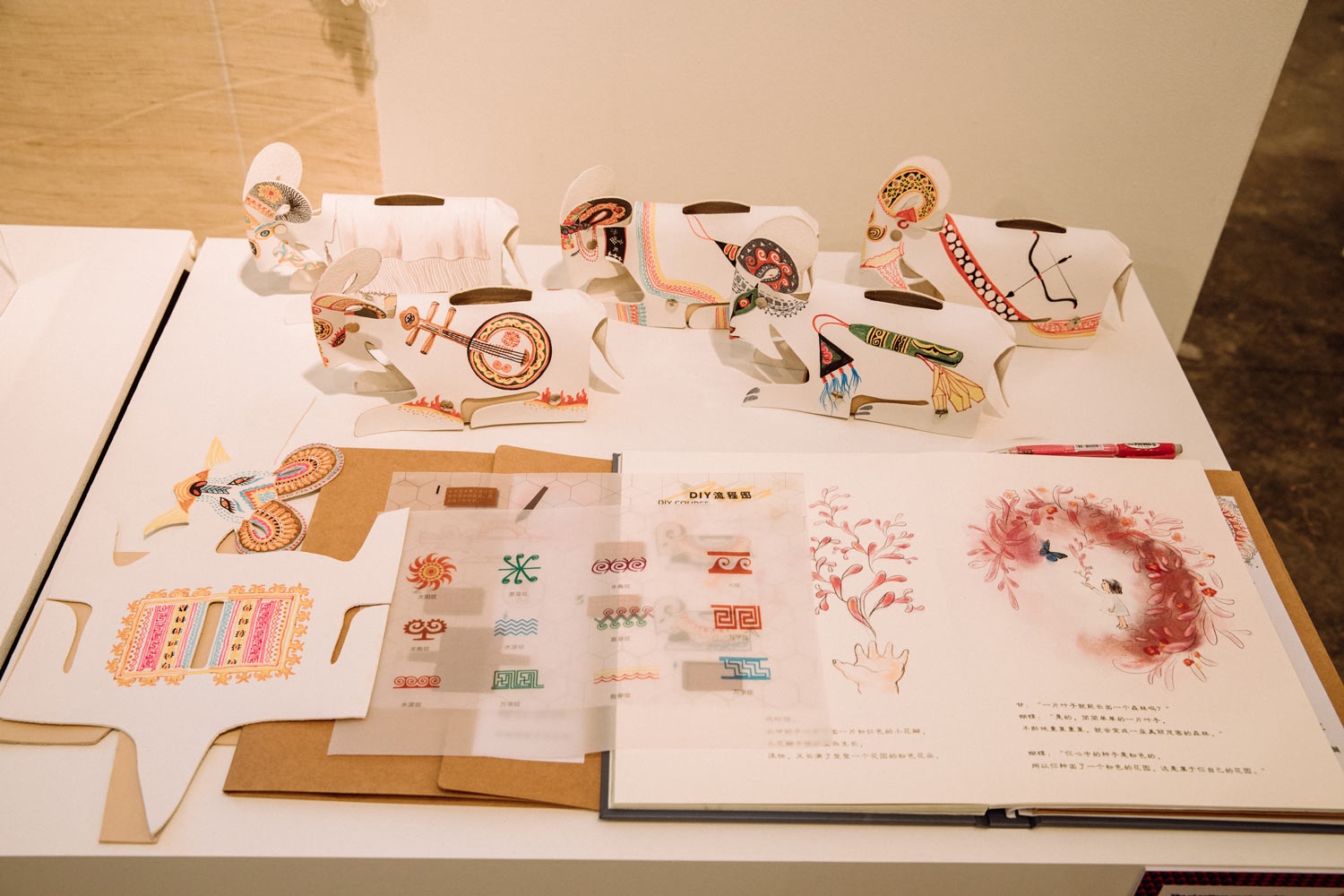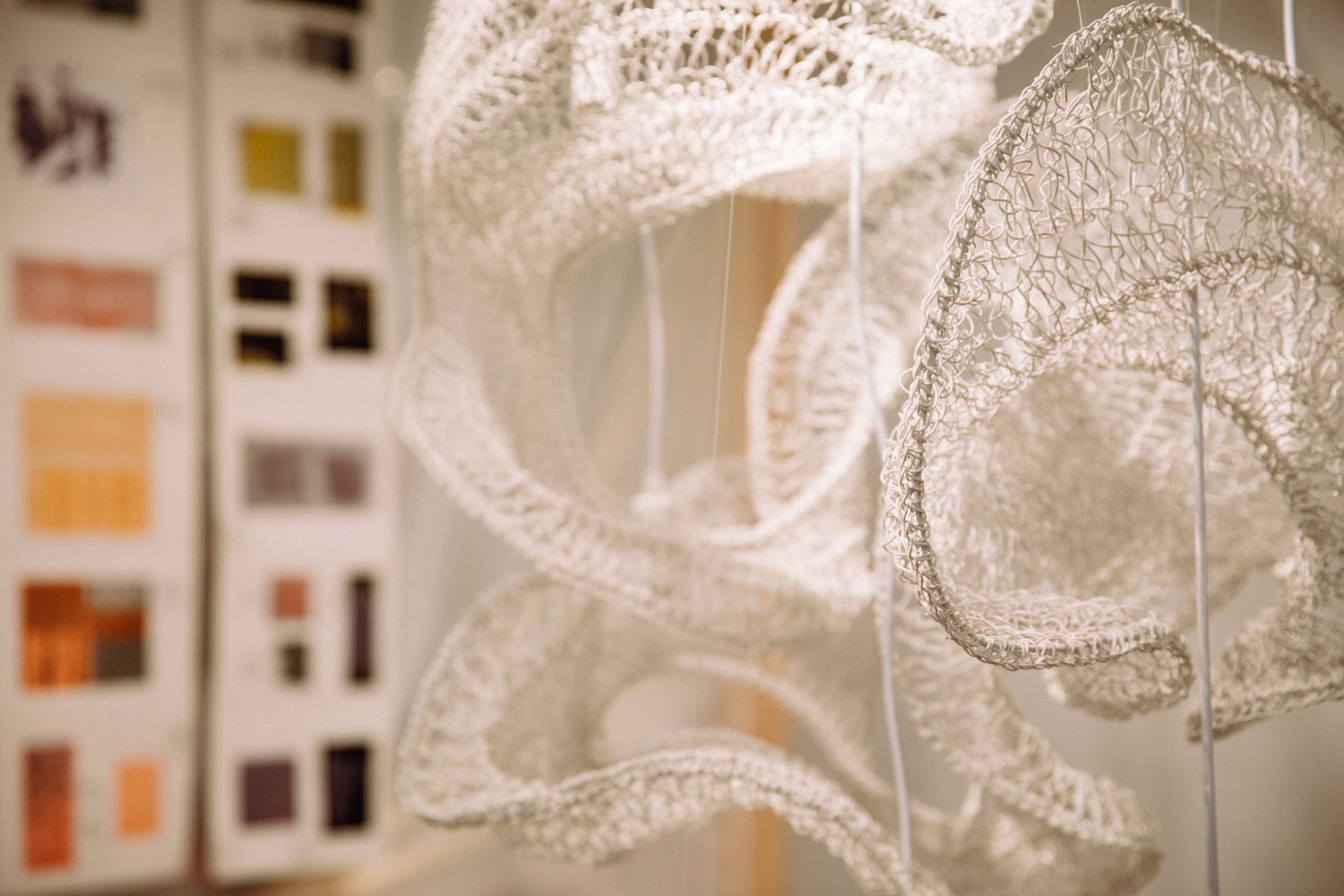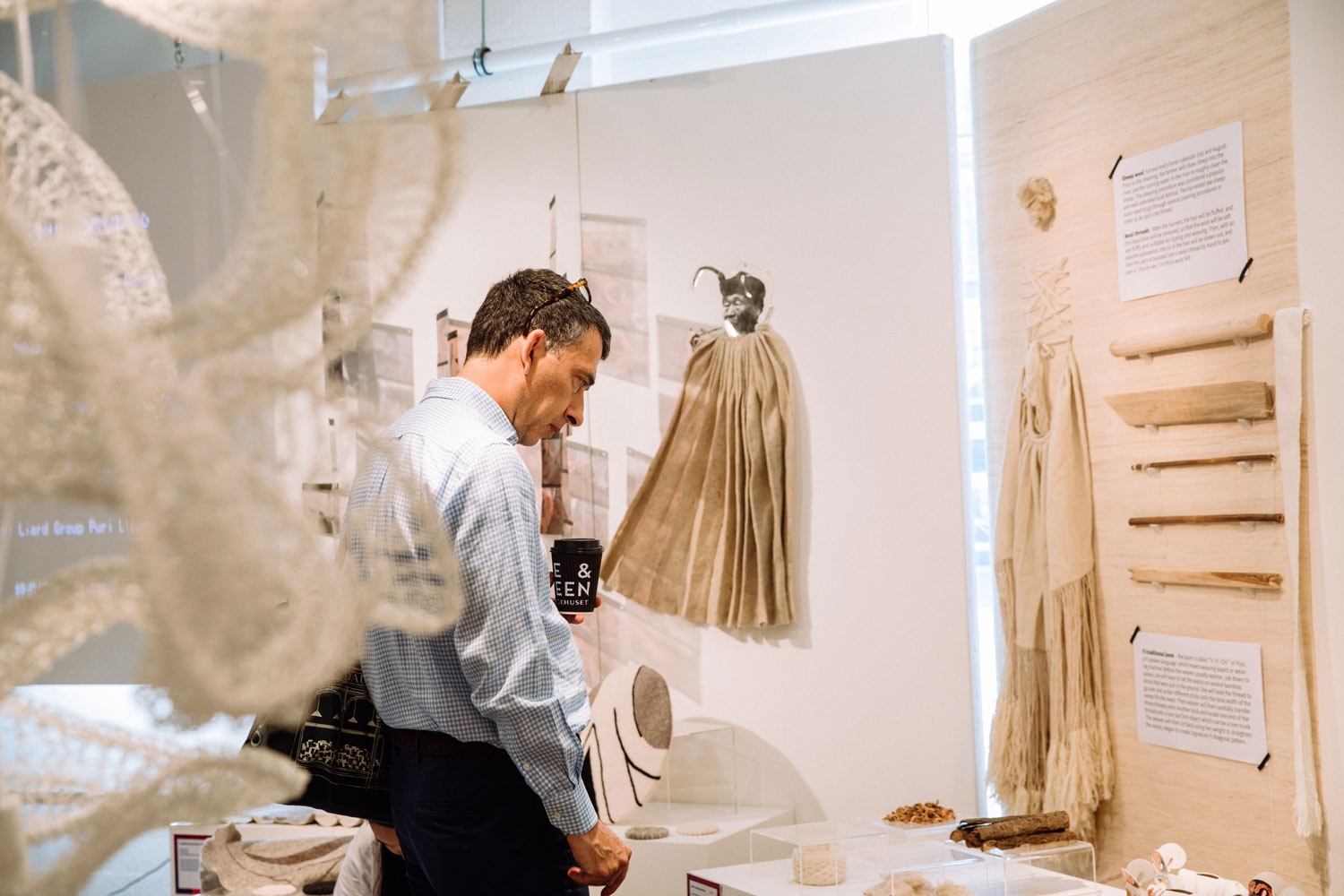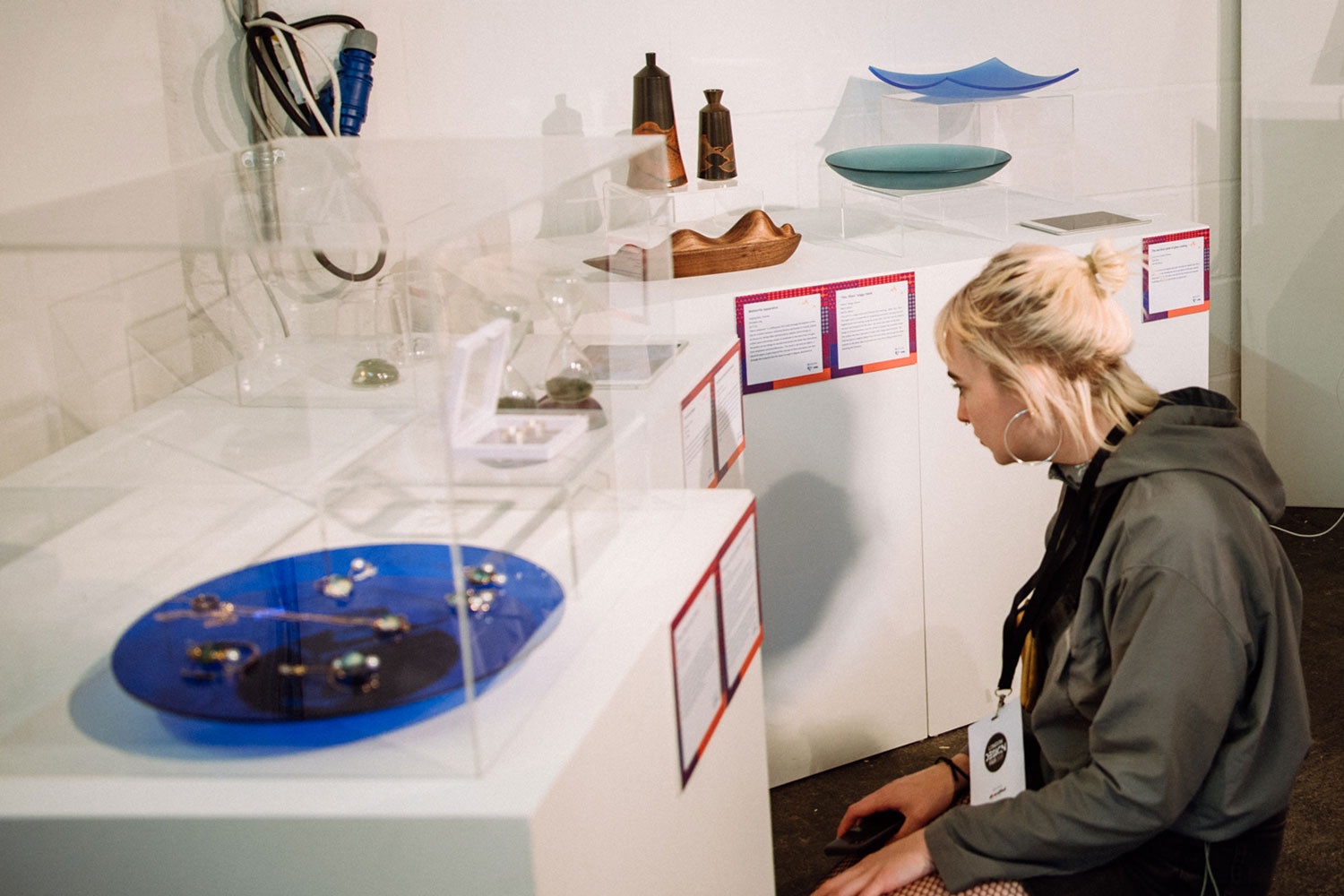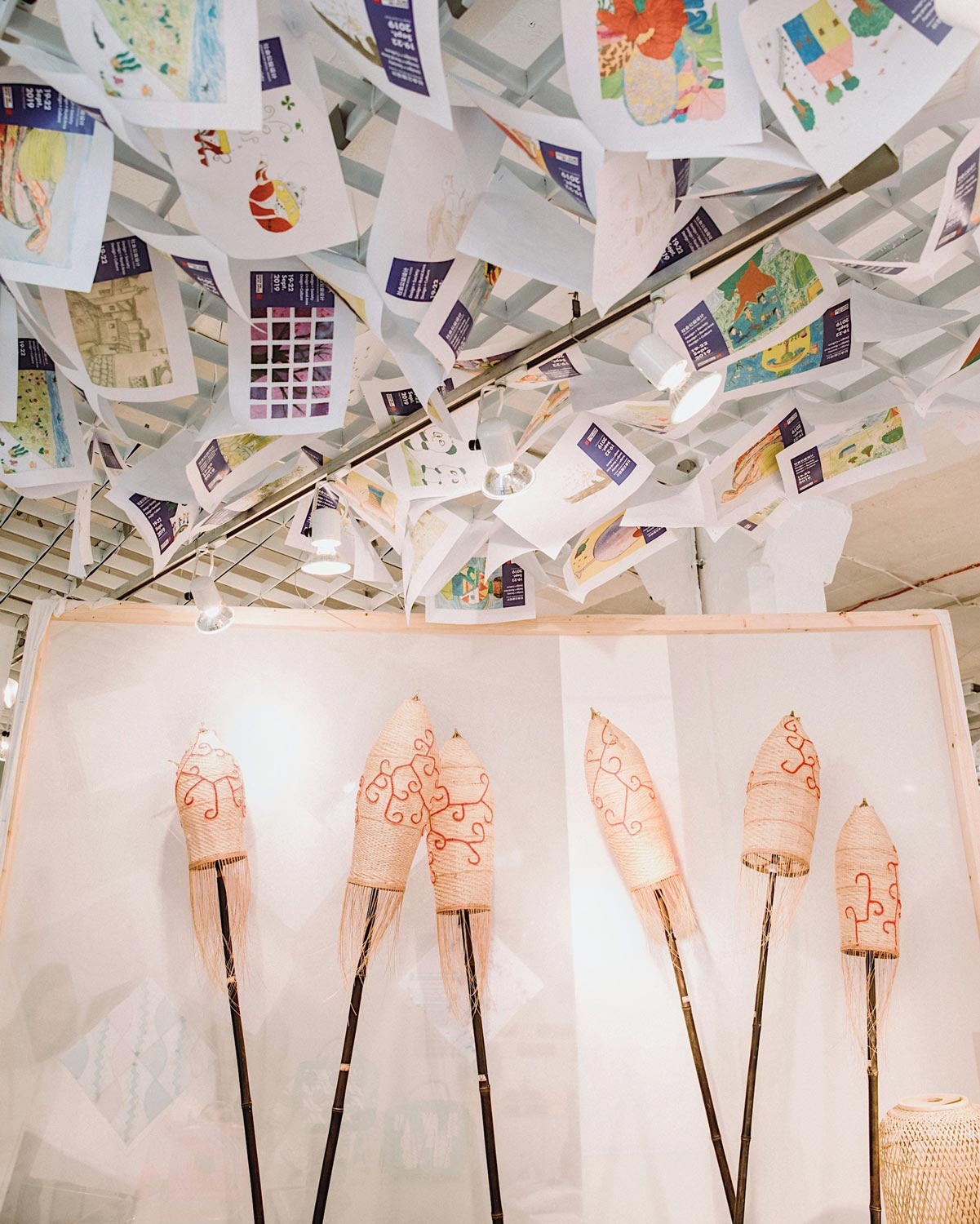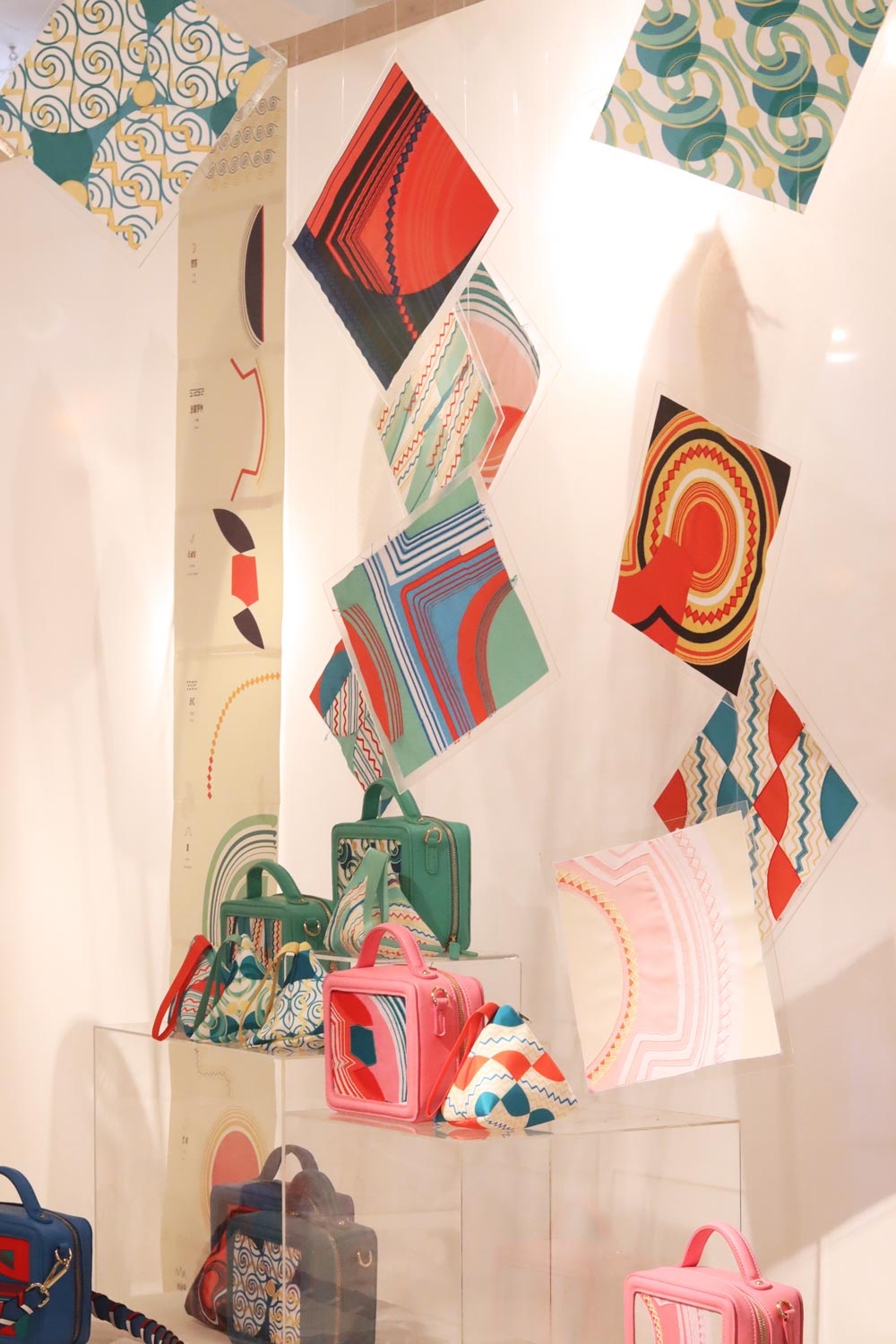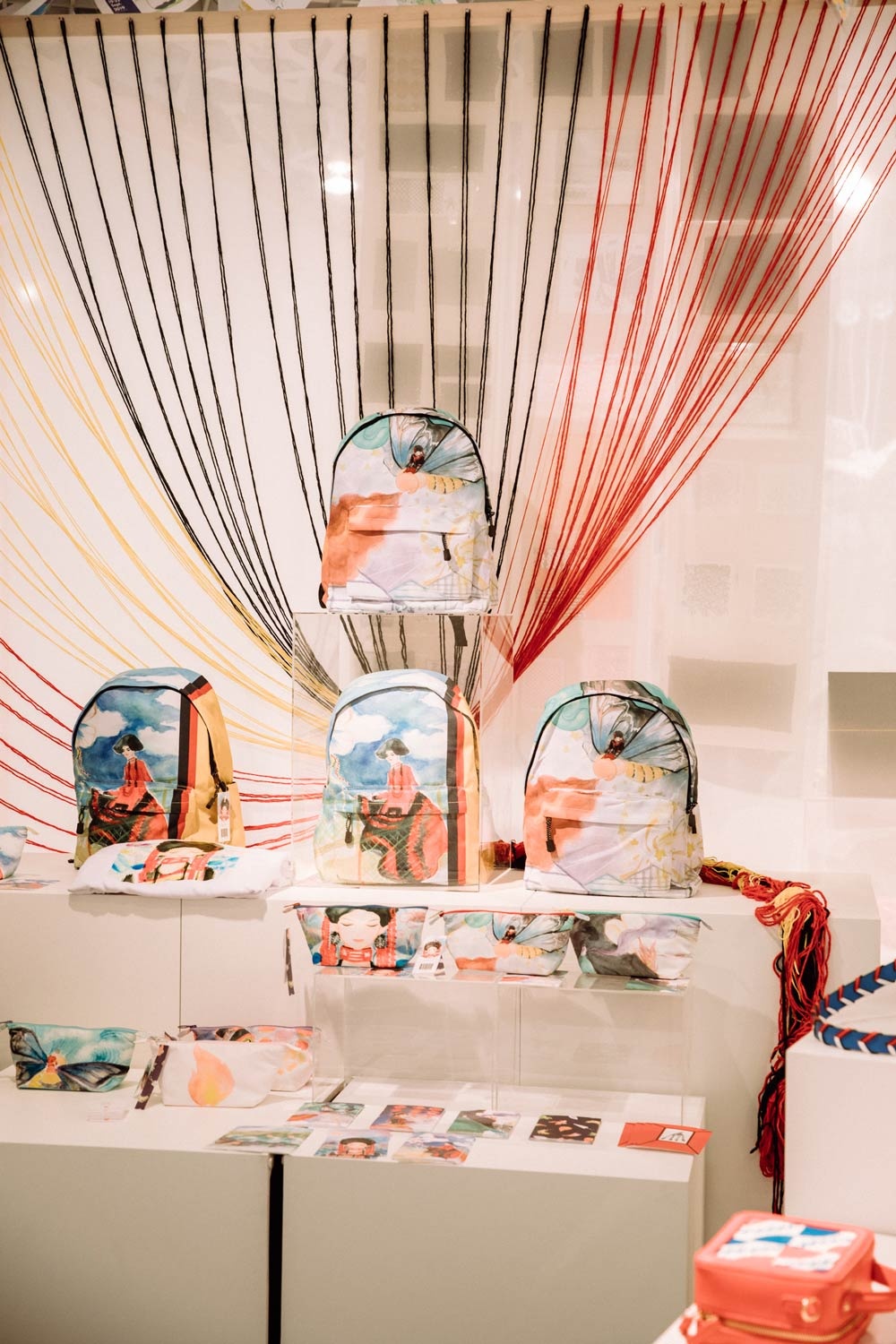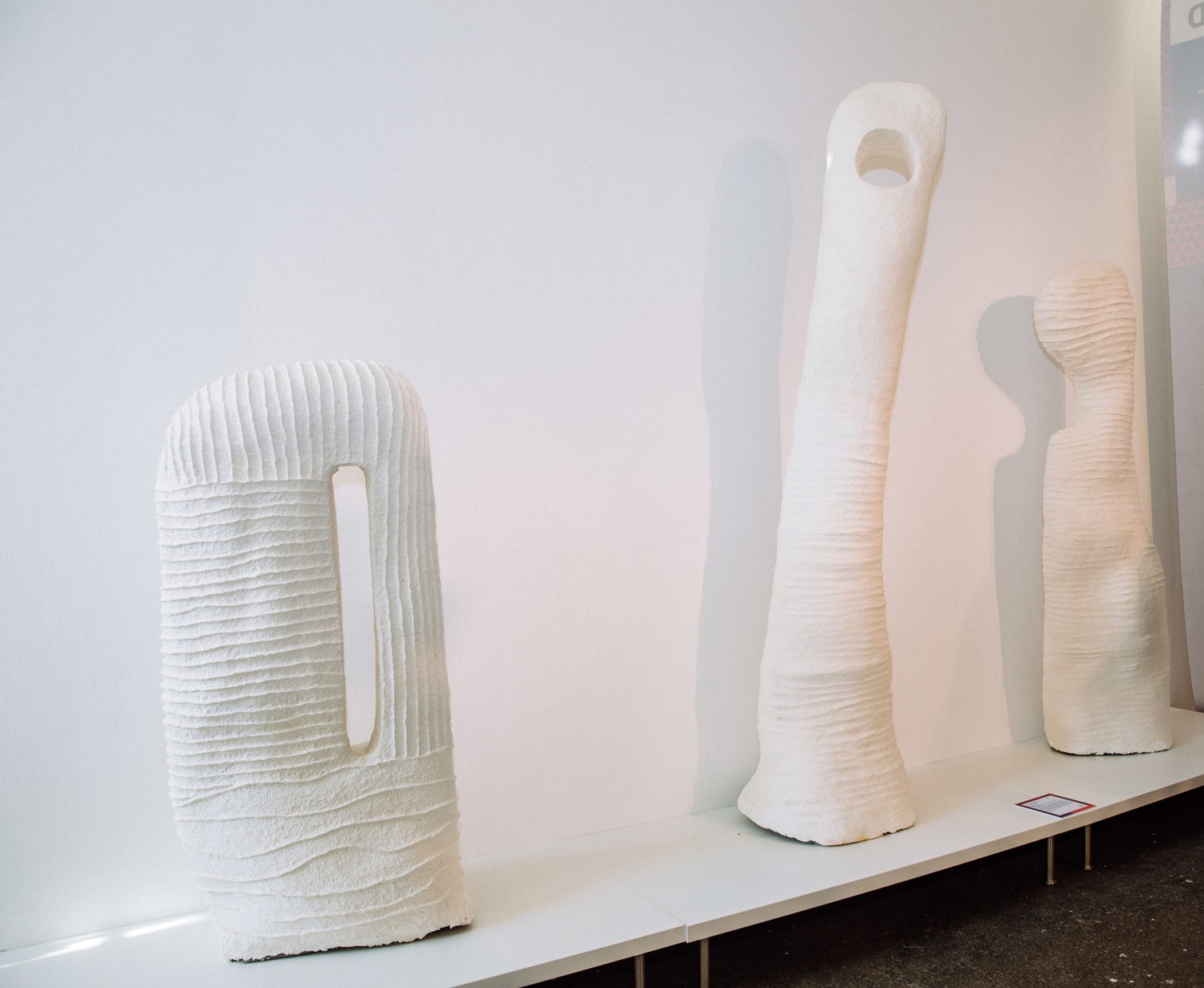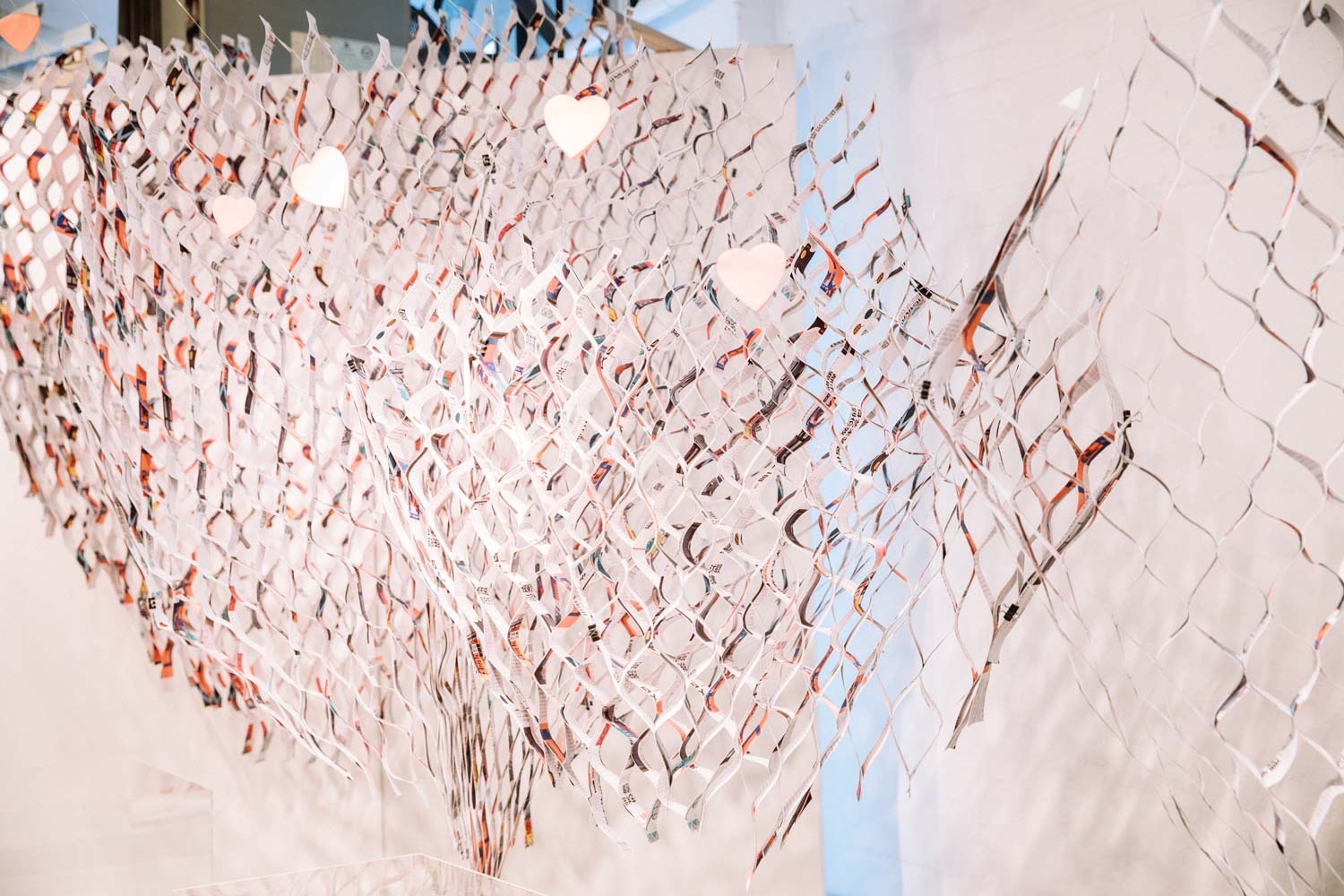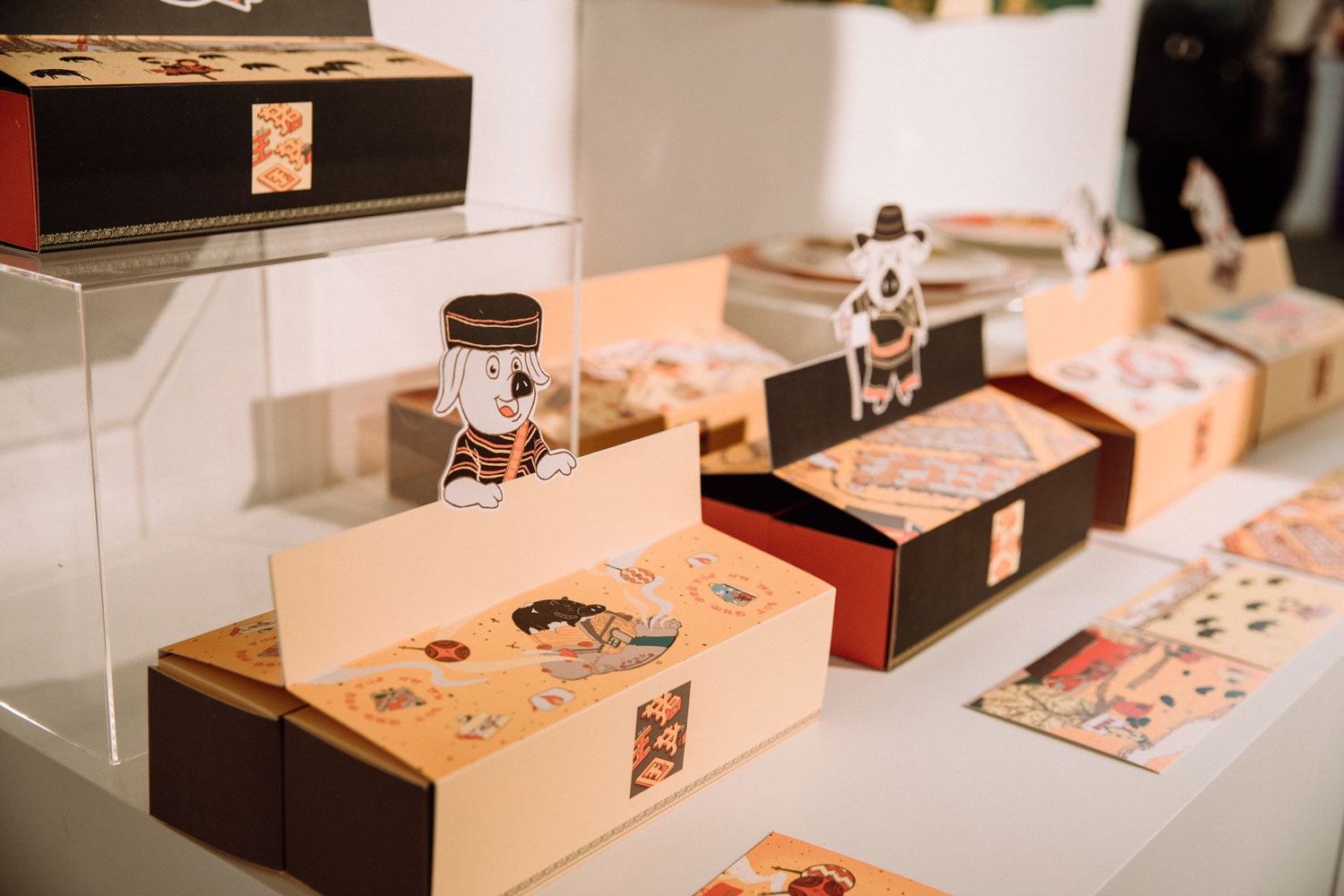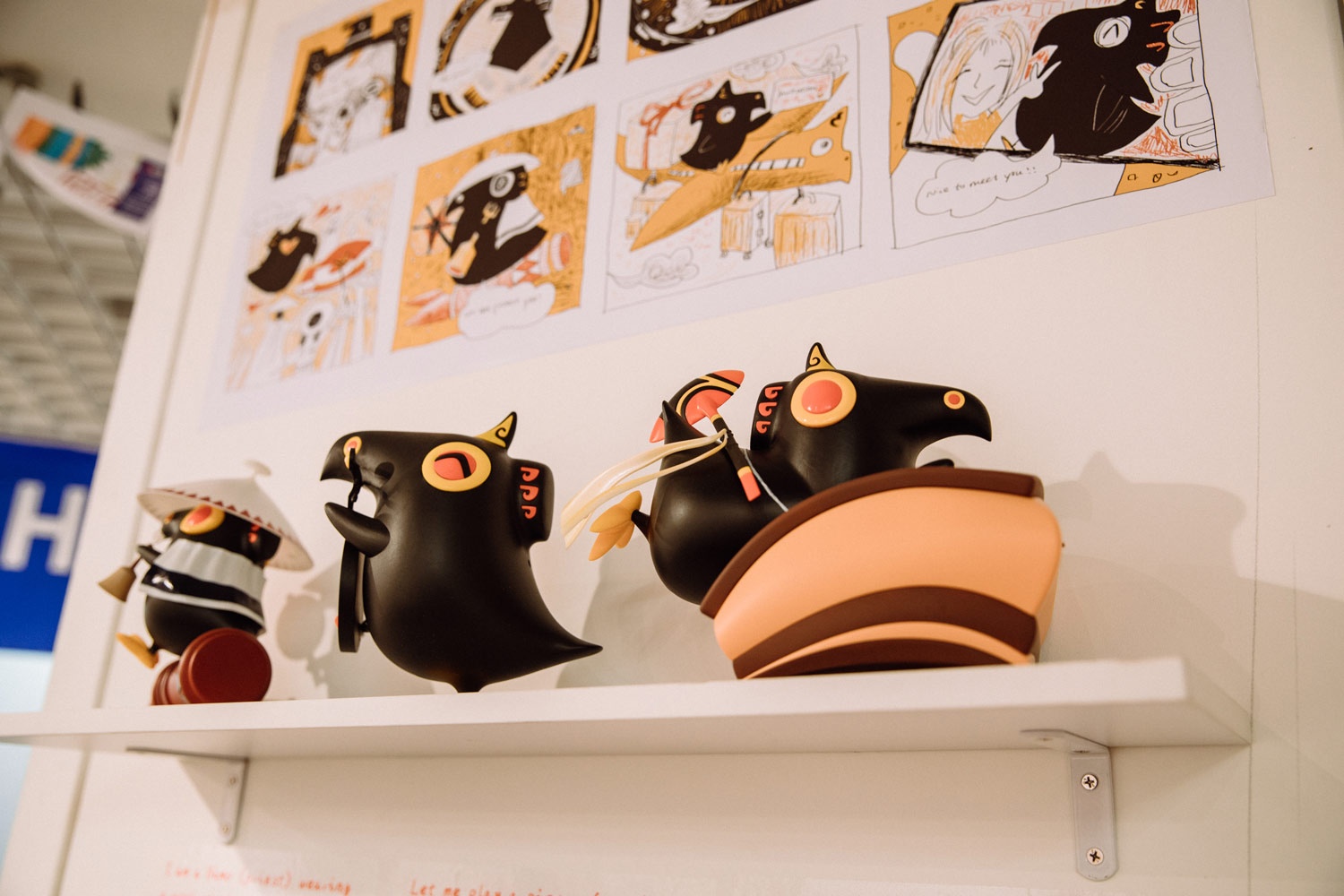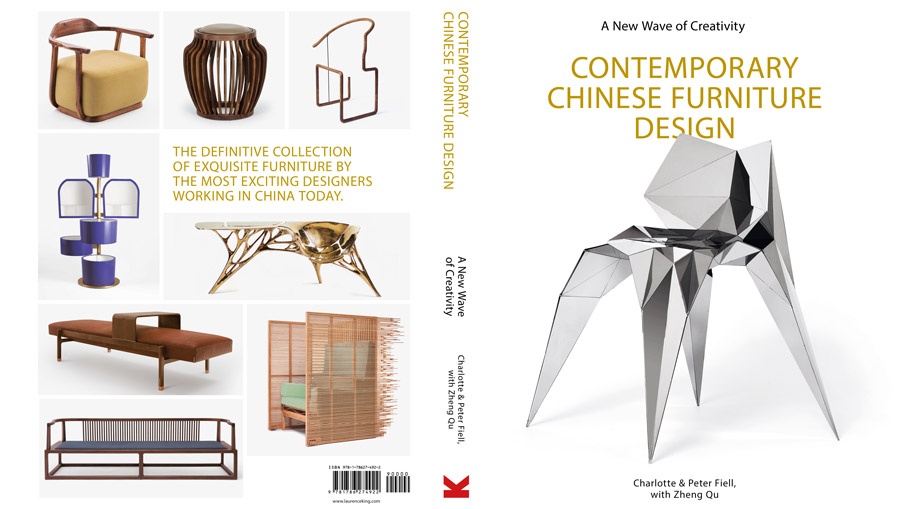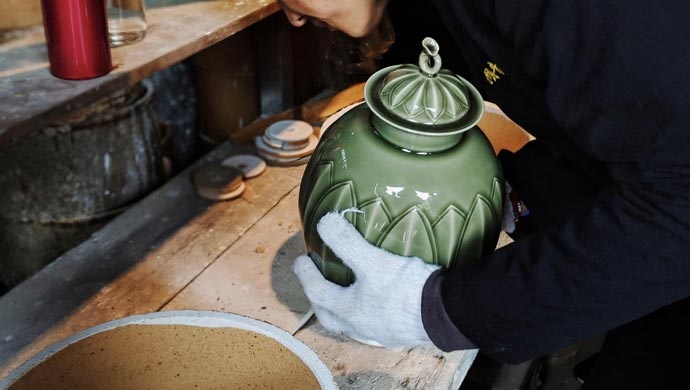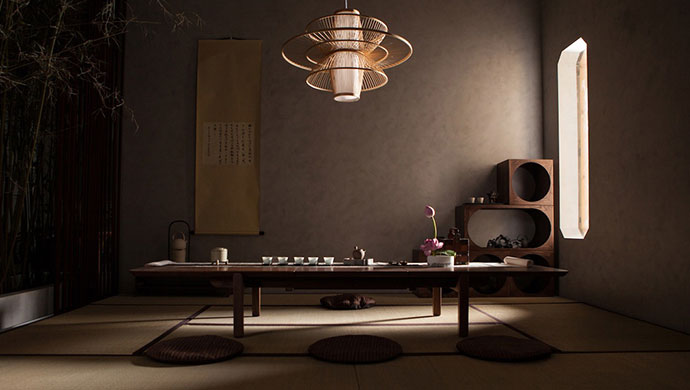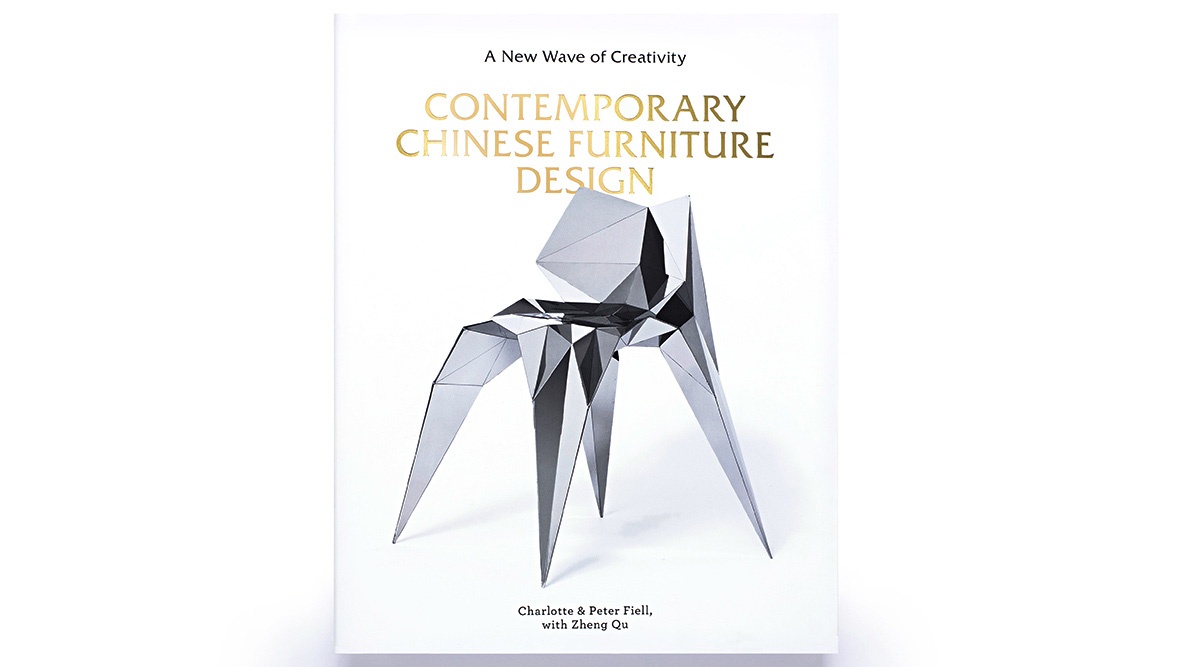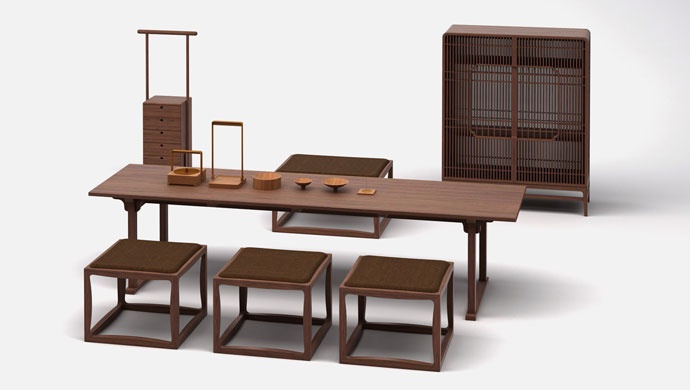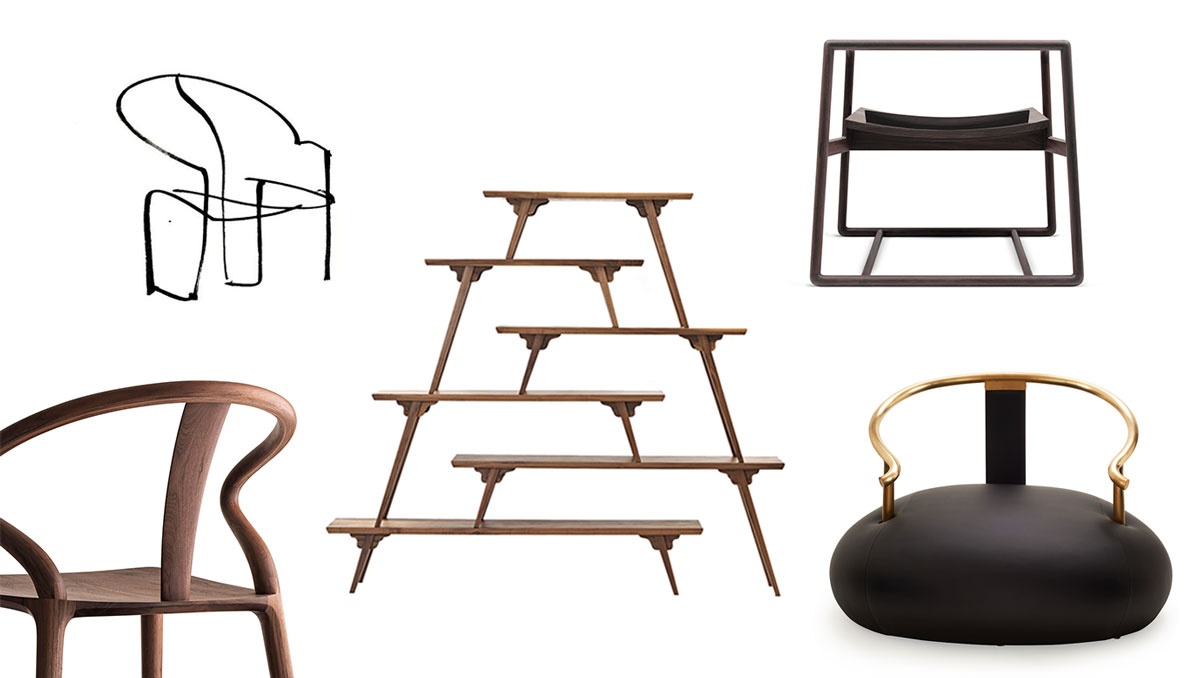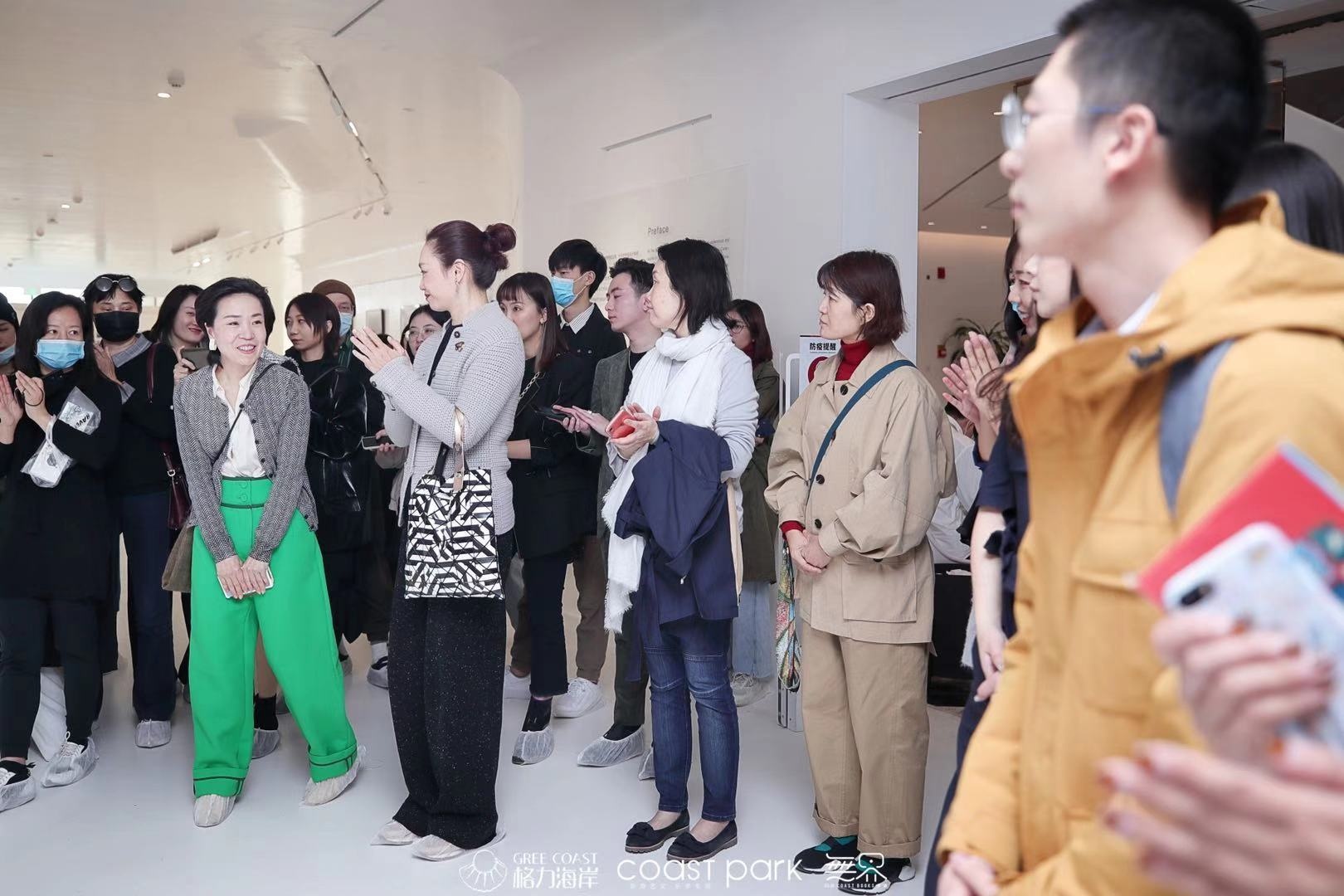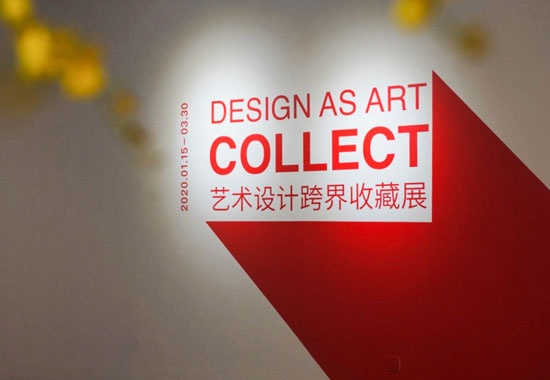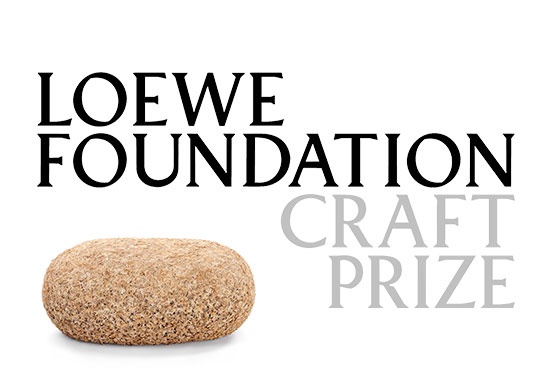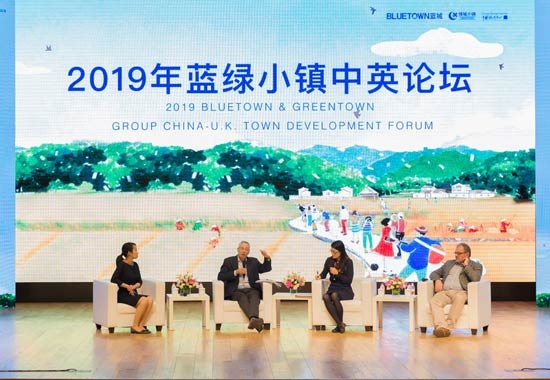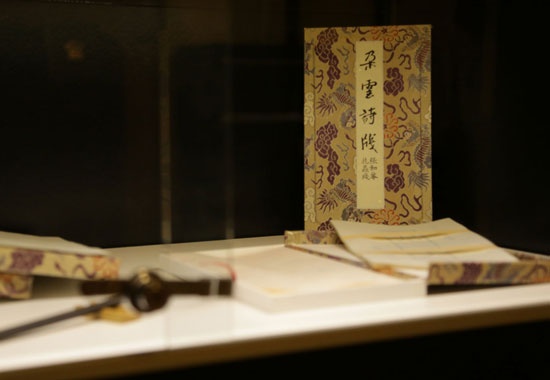Located in the creative heart of East London, the London Design Fair is a four-day event that brings together 550 exhibitors from 40 countries. It is the largest trade destination during the London Design Festival.
Since 2018, China Design Centre has been working to facilitate the cooperation between the China Academy of Art (CAA) and the London Design Fair. On 19-22 September 2019, the China Academy of Art showcased three unique experimental projects at Hall 9, London Design Fair, with an exhibition themed 'Designing the Rural - Design for Social Good’.
The projects focused on the concept of 'targeted poverty alleviation', which based on field trips to three rural areas in China. The students and teachers studied the local crafts and culture, then came out with solutions to provide a sustainable and commercially successful way to improve the life of the local people and protect the craftsmanship. The outcome of these projects exhibited at the London Design Fair sparked numerous interests in the design, techniques and the places that are hardly heard of outside of China - Xiaoliangshan, Leishan, Xiangshan - and successfully attracted lots of sales, orders and enquiries.
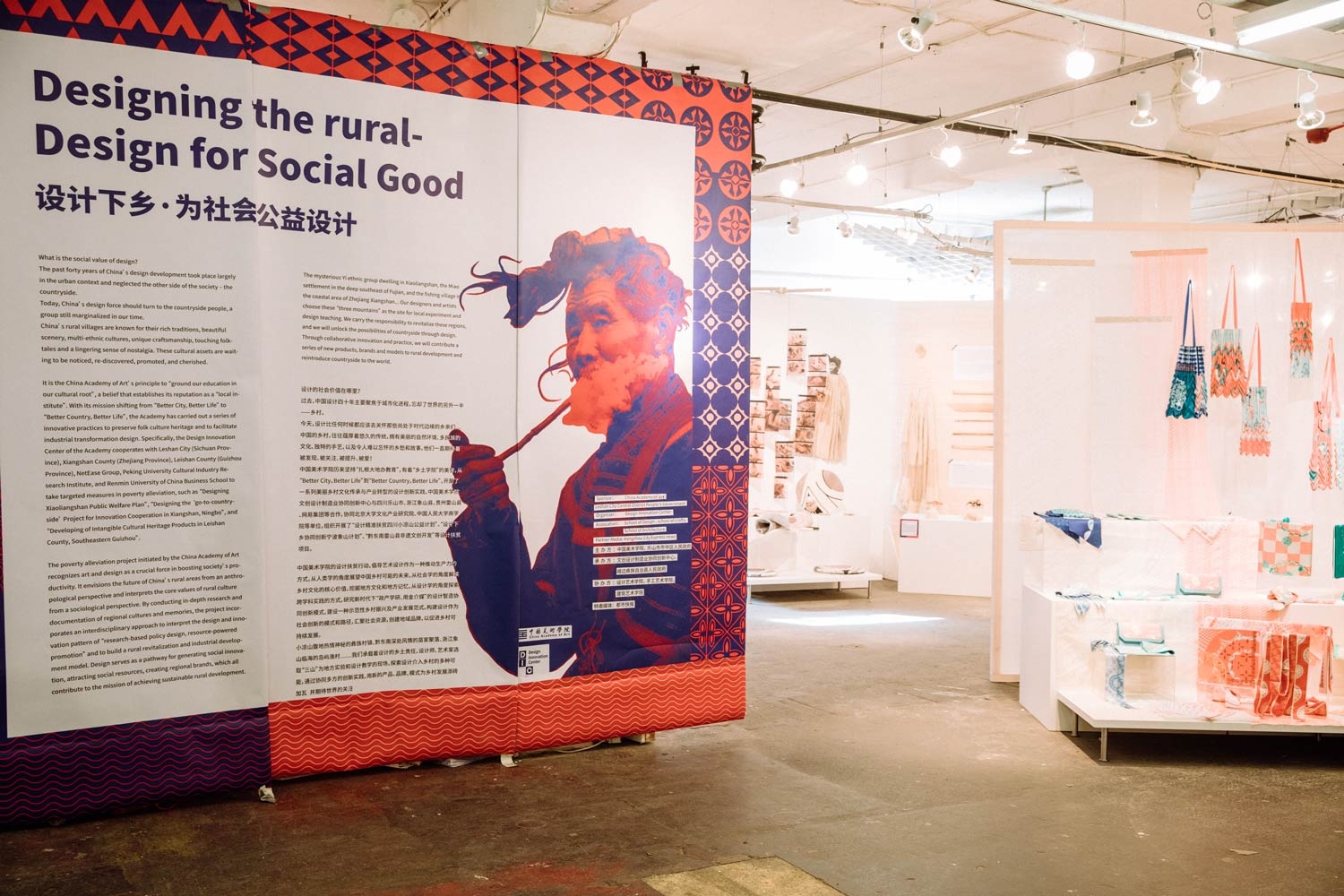
‘What is design? Where is the social value of design?’ This is the proposition that teachers and students of CAA have been thinking about. The past forty years of China’s design development took place largely in the urban context and neglected the other side of the society - the countryside. According to CAA, China’s design force should shift its interest towards rural people, a group still marginalised in our time.
China’s rural villages are known for their rich traditions, beautiful scenery, multi-ethnic cultures, unique craftsmanship, touching folktales and a lingering sense of nostalgia. These cultural assets are waiting to be noticed, re-discovered, promoted and cherished. At the end of 2017, the China Academy of Art proposed a ‘targeted poverty reduction’ strategy: to contribute to society, is the mission of the designers. It took two years and four schools to get to the front of the line in order to design for the benefit of society. They analysed thousands of national patterns, consulted a large number of ancient books and related literature, and finally produced 272 excellent works.
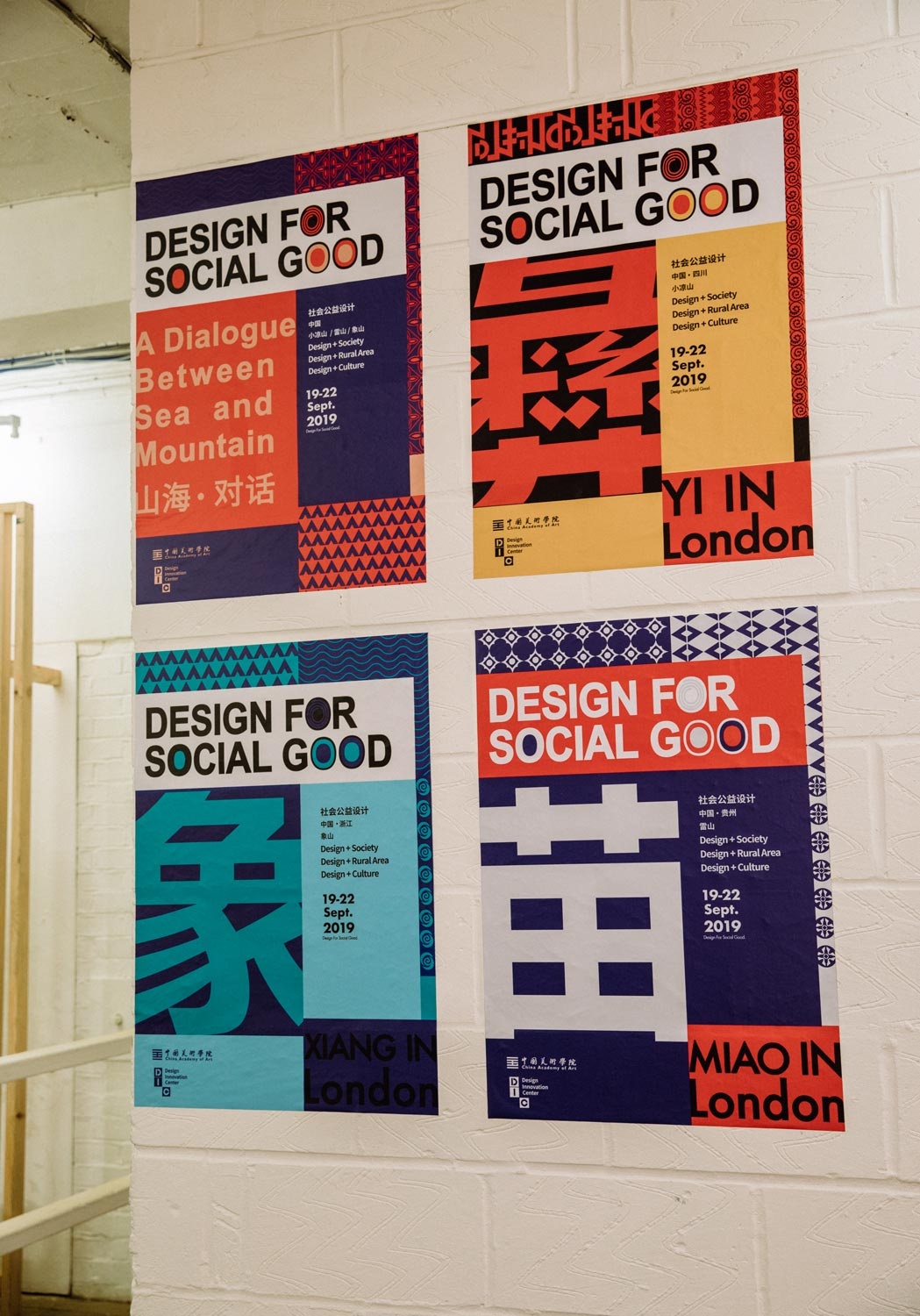
It is the China Academy of Art’s principle to ‘ground our education in our cultural root’, a belief that establishes its reputation as a ‘local institute’. With its mission shifting from ‘Better City, Better Life’ to ‘Better Country, Better Life’, the Academy has carried out a series of innovative practices to preserve folk culture heritage and to facilitate industrial transformation design. Specifically, the Design Innovation Center of the Academy collaborated with Leshan City (Sichuan Province), Xiangshan County (Zhejiang Province), Leishan County (Guizhou Province), NetEase Group, Peking University Cultural Industry Research Institute, and Renmin University of China Business School to take targeted measures in poverty alleviation, resulting in three distinctive projects.
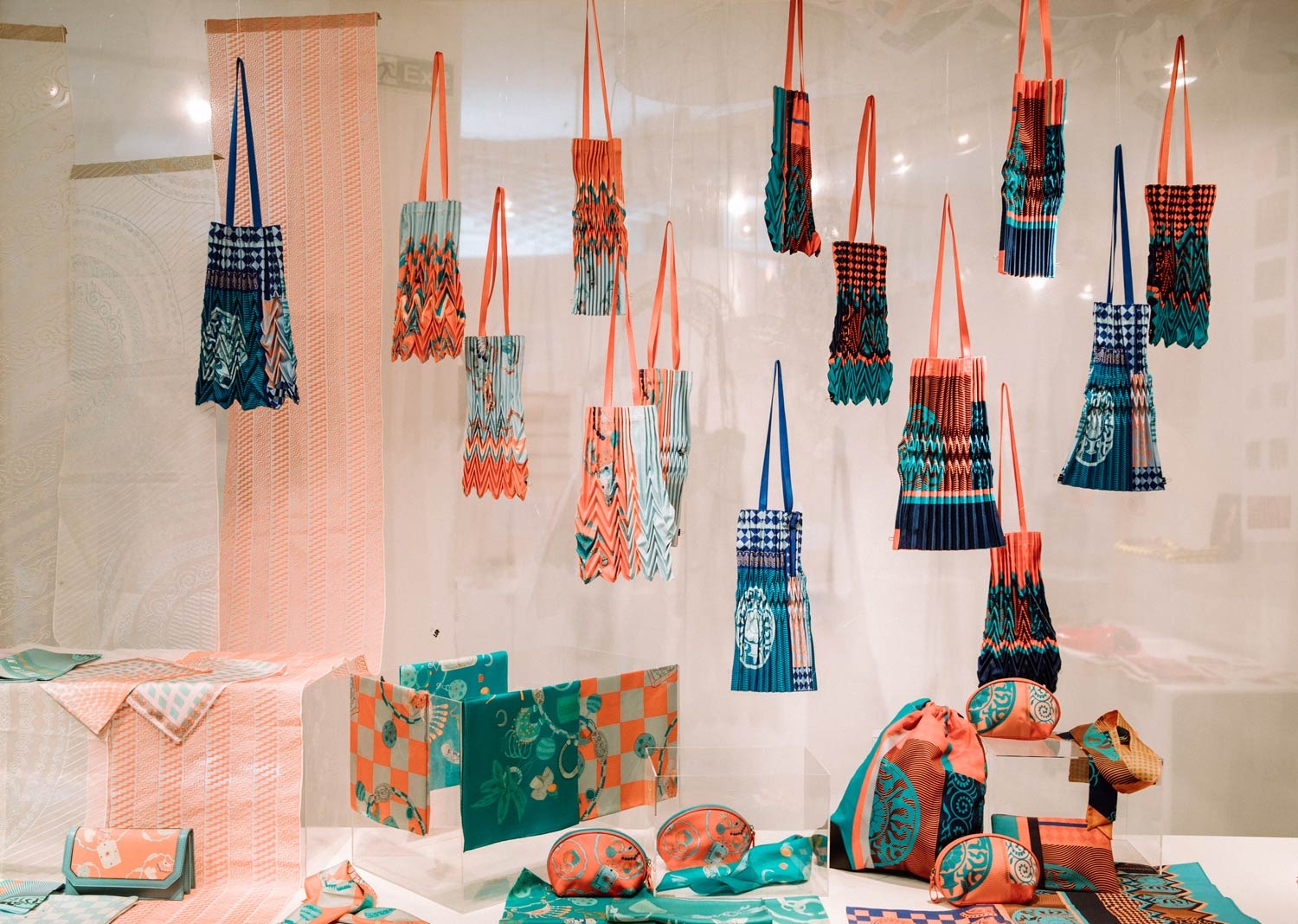
Design Collection by Prof. WU Bibo and her design team
The poverty alleviation project initiated by the China Academy of Art recognises art and design as a crucial force in boosting society’s productivity. It envisions the future of China’s rural areas from an anthropological perspective and interprets the core values of rural culture from a sociological perspective. By conducting in-depth research and documentation of regional cultures and memories, the project incorporates an interdisciplinary approach to interpret the design and innovation pattern of “research-based policy design, resource-powered promotion” and to build a rural revitalisation and industrial development model. Design serves as a pathway for generating social innovation, attracting social resources, creating regional brands, which all contribute to the mission of achieving sustainable rural development.
The mysterious Yi ethnic group dwelling in Xiaoliangshan, the Miao settlement in the deep southeast of Guizhou, and the fishing village in the coastal area of Zhejiang... The Academy chose these ‘three mountains’ as the site for local experiment and design teaching. They carry the responsibility to revitalise these regions, and will unlock the possibilities of countryside through design. Through collaborative innovation and practice, they will contribute a series of new products, brands and models to rural development and reintroduce China’s countryside to the world.
Yi In London - Revival or innovation? What is the future of our traditions?
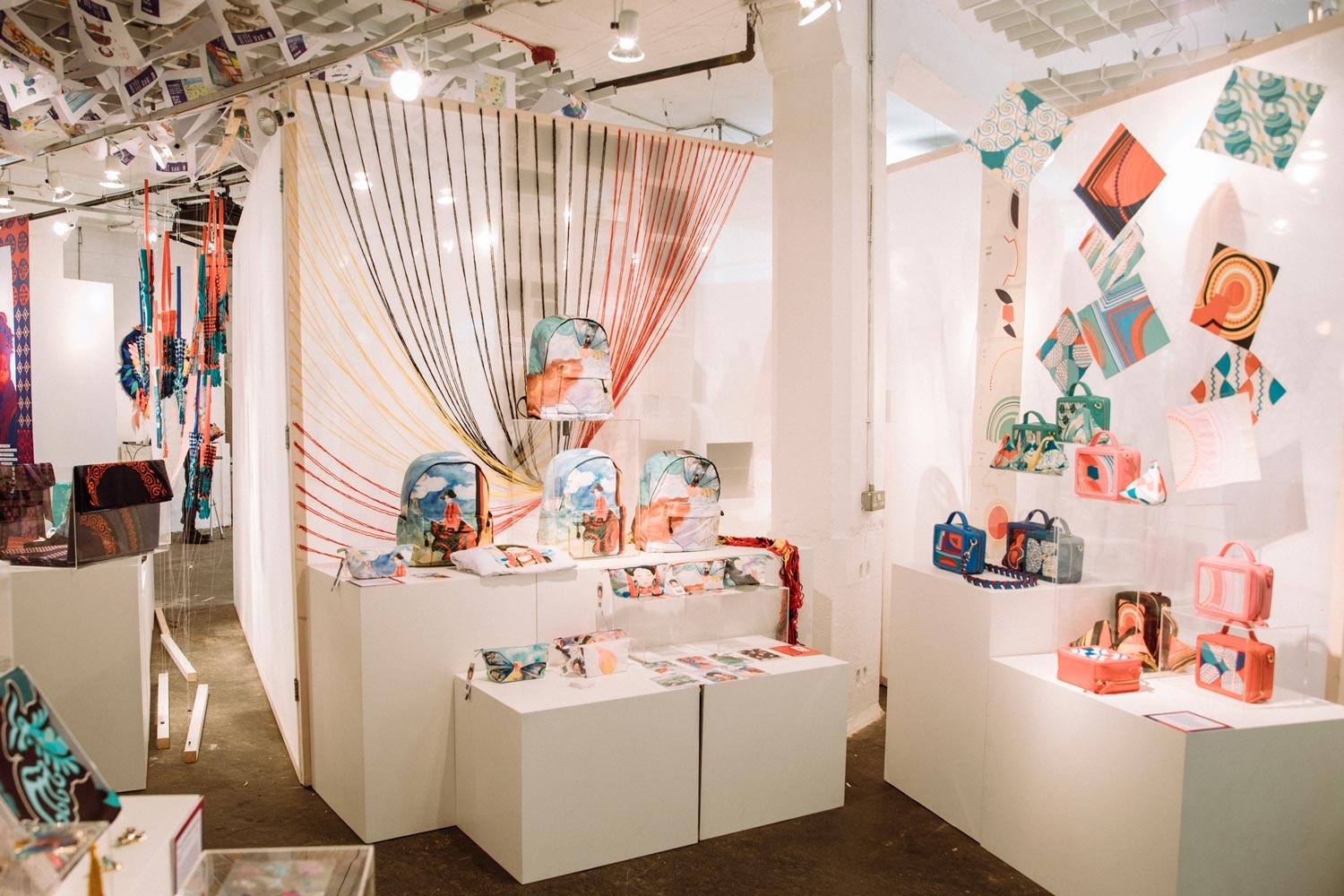
In the southwest mountainous area of Leshan City (Sichuan, China), there is a beautiful and mysterious land. The Yi people have lived here for thousands of years, and many villages are located high in cliffs and remain isolated in the mountains. Due to the inconvenient transportation, Yi people lived a self-sufficient life and formed unique customs and traditions.
‘Designing Xiaoliangshan Public Welfare Plan’ is a project initiated by China Academy of Art, supported by several Chinese and international designers, artists and the local government. Dozens of artists and designers were invited to create freely on the land of Xiaoliangshan. Throughout the past year, the design team has visited twelve rural villages and eight traditional artisans in the region, studied four conventional craft techniques and materials, trying to find a way to transform the 'locals' craft into a modern lifestyle. From a designer's perspective, the Academy endeavours to discover cultural memories, redesign traditional objects and ethnic elements. The beauty of Xiaoliangshan, after deconstruction and reconstruction, inheritance and subversion, will once again be presented to the world in a brand-new way.
Xiang in London - An ethnic group or the native land? Where is the future of rural revitalisation?
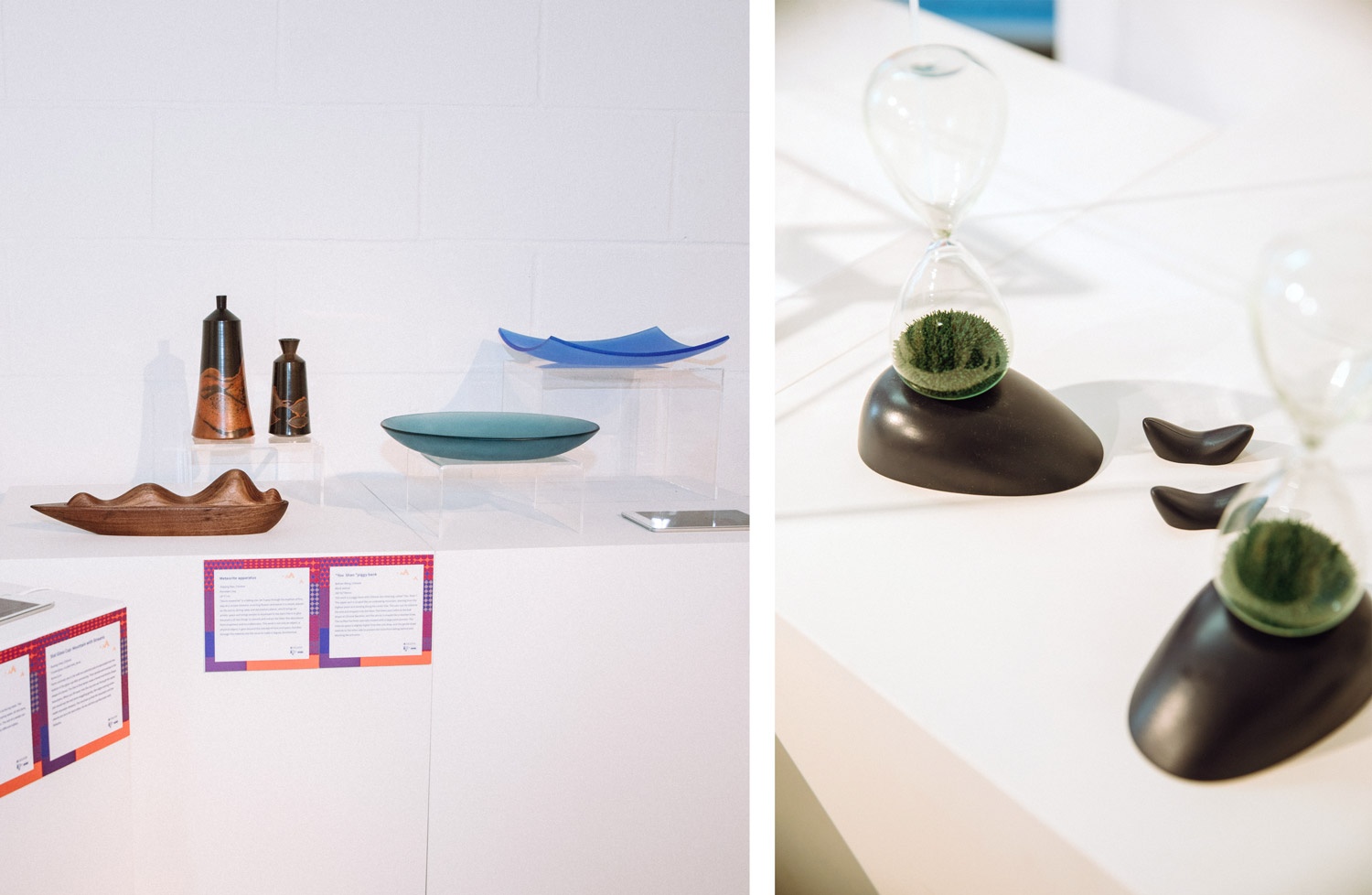
Xiangshan (Ningbo, Zhejiang, China) is surrounded by the sea on three sides, embraced by the two ports, and is known as the ‘Eastern Youth Island and Fairy Country’. Xiangshan County has a long and winding coastline. The ebb and flow of the tides witnessed the ups and downs in the history; fishing boats and fishermen in the sea, fishing gear and drying nets in the tidal flats, music, and tents on the beach, fishing villages and fields in the seaside, streetscapes and public facilities in the fishing port, and a wide variety of intangible cultural heritage all tell the story of the hometown.
‘Designing the Rural for Innovation Cooperation in Xiangshan Ningbo’ project mainly focused on the rich marine culture, environmental ecology, agricultural production base, film and television resources in Xiangshan. A series of practical activities were carried out such as design teaching, artistic creation and exhibition. The whole project is an integrated teaching reform aiming at the undergraduate, postgraduate and doctoral students. Through in-depth research and dialogue between people, object and space, the project as a field experiment tries to unlock the future possibilities of rural society through design.
Miao in London - Inheritance or change? What is the method of cultural innovation?
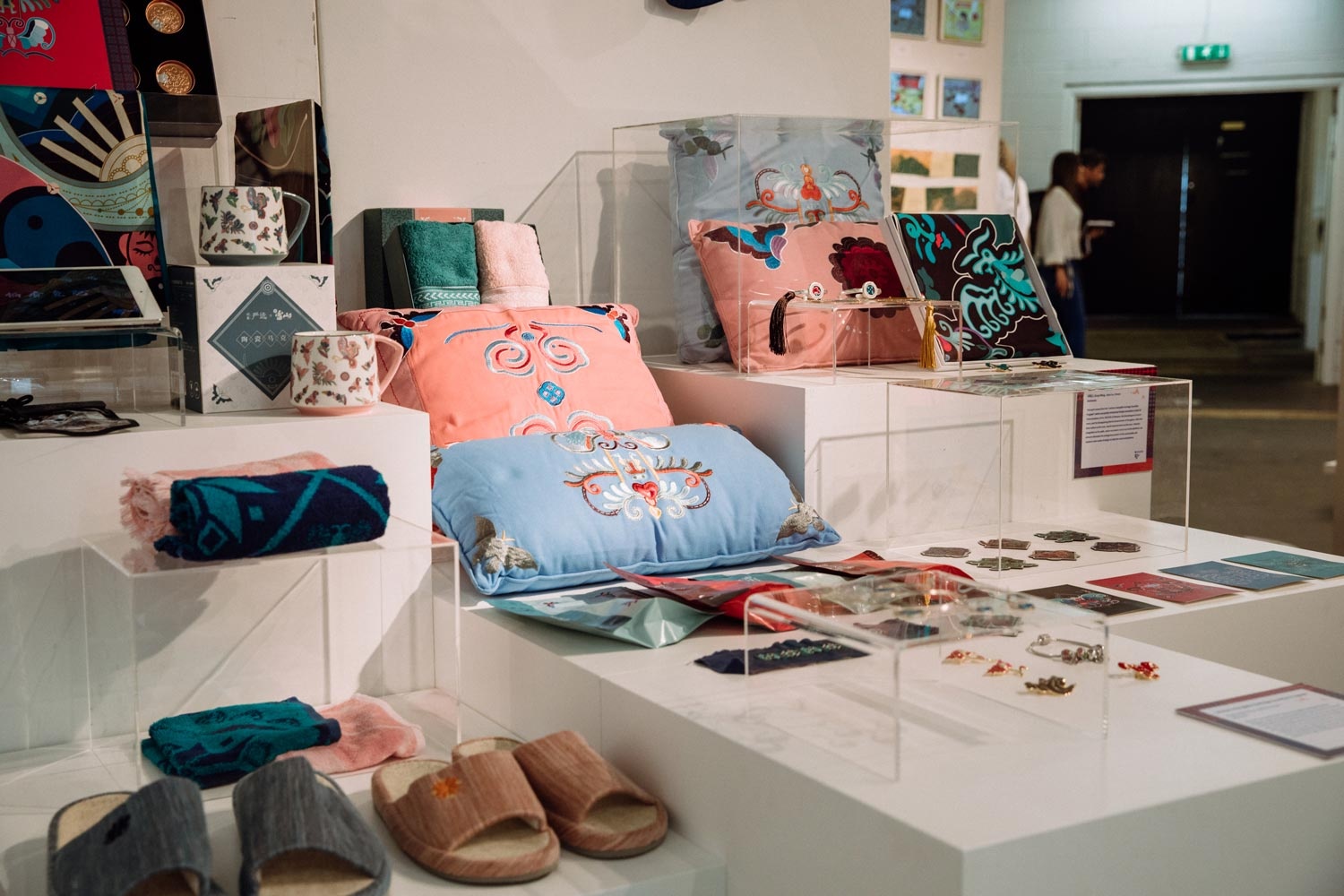
Located in the southwestern part of the Qiandongnan Miao and Dong Autonomous Prefecture, Leishan County (Guizhou, China) is the birthplace of Miao culture. The population of the Miao people in Leishan takes up more than 80% of the total population. By 2018, 13 intangible cultural heritages in Leishan County, including Miao embroidery and Miao silver, have been listed as the representatives of National Intangible Cultural Heritage.
‘Developing of Intangible Cultural Heritage Products in Leishan County, Southeastern Guizhou" is a cooperation project between NetEase and China Academy of Art, and a poverty alleviation practice project. Miao culture, Miao embroidery, Miao silver, Miao food, and other local specialties with ethnic characteristics are the driving direction for shaping the Leishan brand and developing Leishan products. Through the research of the art history of Miao culture and the traditional Miao embroidery, designers extracted three core patterns that embody Miao culture, which is butterfly pattern, bird pattern, and dragon pattern, and applied them to product packaging and handcrafts, cultural and creative product design and other material agencies. Through the method of developing a series of products, the project aims to achieve the brand empowerment effect and help build a new sustainable poverty alleviation model that effectively connect supportive social resources with poverty alleviation action.
-
Exhibiting Artists:
Ni Xianou, Wu Bibo, Zhou Donghong, Lang Qing, Chen Yunjia, Lin Yinji, Dong Sichun, Tian Wei, Ma Yichen, Liu Xinyu, Lv Hanchang, Liu Lixin, Xu Tiange, Wu Yue, Li Yan, Li Liang, Wang Xiaoya, Xu Jiaxin, Huang Neng, Xu Guixin, Zhang Hui, Lin Xi, Chen Chen, Wang Jingchao, Liu Chun, Zhu Yan, Zhang Xiya, Zhou Yizhen, Lei Linlin, Zhuo Weiyang, Liu Yi, Xia Fan, Chen Xumin, Peng Jiaxian, Huang Xiaoli, Li Mingqiang, Chen Ruping, Wang Bohan, Li Xiaoxia, Mao Xiaping, Qingjing Studio, Simon Fraser, Kate Sedwell, Lorna Jean Philpot, Leonid Krykhtin.
Organisers:
China Academy of Art
Leshan City Central District People’s Government
Co-organiser:
Design Innovation Center, CAA
Ebian Yi People's Government
Association:
School of Design, School of Crafts, School of Architecture, CAA
Xiangshan Town People's Government
Leishan Town People's Government
NetEase Yanxuan
Special support:
China Design Centre




